Full disclosure: I’m not in Kyrgyzstan anymore. My Fulbright fellowship concluded a couple weeks ago, and I’m writing this dispatch from the comfort of my childhood home in Portland. I left Bishkek in a bit of a hurry, and I feel like a small slice of me stayed behind. Hopefully, I’ll be back before too long to recover that slice. But if you’re looking for a nostalgic restrospective piece, this ain’t it. I’m still decompressing, you know…the emotions will come in time.
Over a month has passed since my last post, and I’ve covered a lot of ground in that time – new parts of Kyrgyzstan, Uzbekistan, and Iran – and I have some stories and photos to share with you. It’s taking me a while to sift through everything, and I’m still kind of mentally exhausted from traveling and readjusting and traveling, so bear with me. In the meantime, here’s a quick look at three of Kyrgyzstan’s attractive alpine lakes: Issyk Köl, Song Köl, and Köl Tör. This post has lots of photos, so you might want to refill your coffee mug while the page loads.

A lone yurt on the shore of Song Köl
Issyk Köl
If Kyrgyzstan is the “Switzerland of Central Asia” (a generous comparison that tourist agencies will gladly have you believe), then Issyk Köl is surely this country’s Lake Geneva. Situated some 200km east of Bishkek in a sheltered crease of the Tien Shan Mountains, this expansive lake – the second largest alpine lake in the world, in fact, and the second largest saline lake as well – has been a popular tourist destination since early Soviet times. It’s said that Brezhnev frequented the lakeside resorts and sanatoria, while Yuri Gagarin allegedly rehabilitated here following his historic ride into space. The Soviet Navy brass liked Issyk Köl so much that they built a torpedo testing center on the eastern shore, a clear gesture of appreciation. In those days, Issyk Köl was simply the place to be.
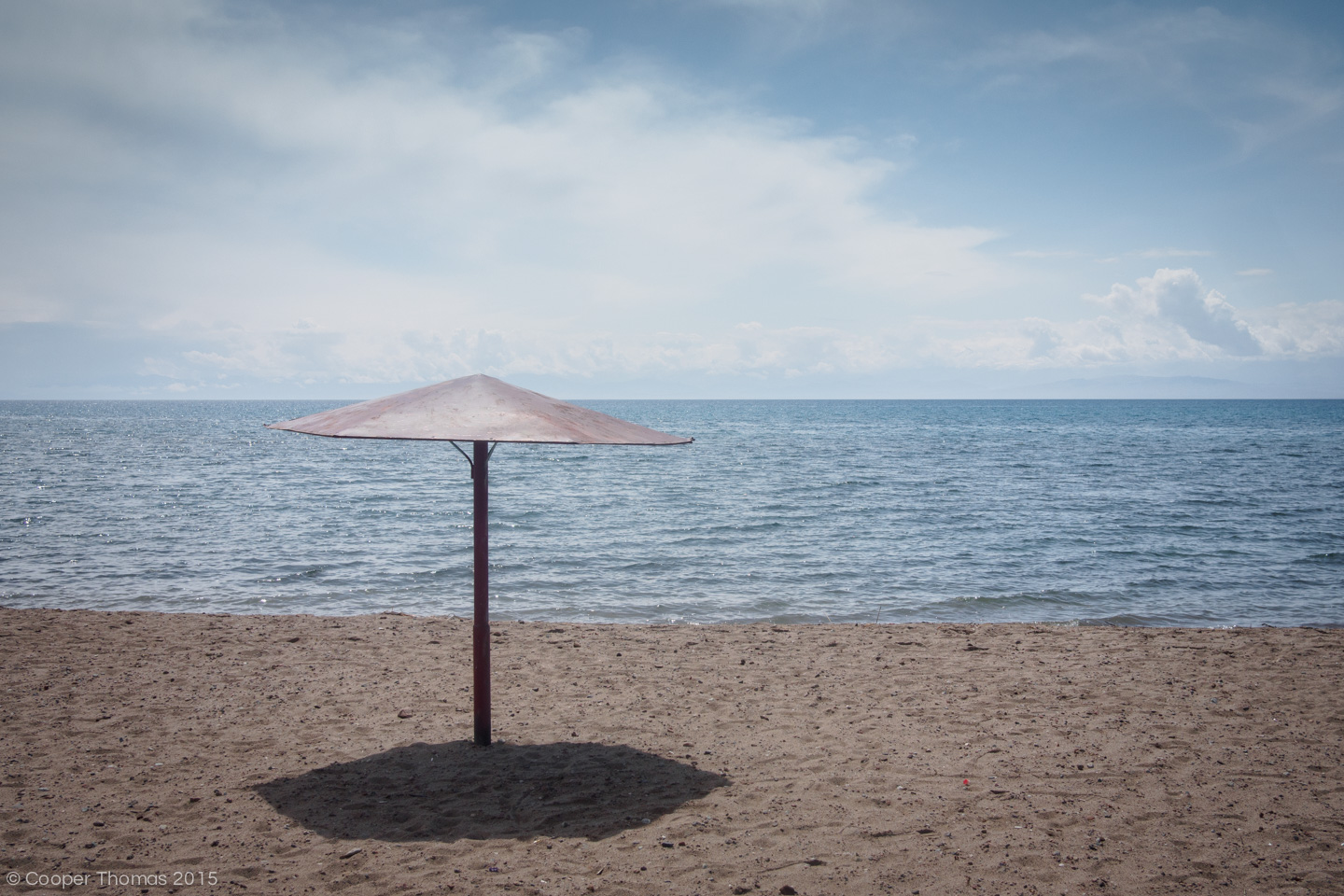
Unoccupied metal umbrella on the beach
Issyk Köl’s lakeside resorts have certainly lost their luster in the post-Soviet era. But the lake is still favored for its warm waters and fine panoramic views of the surrounding mountains. Due to the lake’s depth and salinity, it never freezes; in fact, its name literally means “Warm Lake” in the Kyrgyz language. During the hot summer months, locals and foreigners still flock to the resorts and sanatoria strewn along the lake’s northern shore. On clear days, they might enjoy 360 degree views of the mountains, with the peaks of the Kungoy (‘sunny’) Ala-Too to the north and the Terskey (‘in the shadow’) Ala-Too to the south.

A hazy May day on Issyk Köl. See the mountains? Me neither
Warm though the water may be in August, it’s pretty damn cold the rest of the year. Whoever gave Issyk Köl the name ‘Warm Lake’ clearly never went swimming here in the dead of winter. So following the perennial autumn outflux of tourists, local businesses grind to a halt, and the towns fall quiet. Most restaurants, guesthouses, snack shops shut down for the long offseason. Youngsters reclaim their bedrooms from renters and head to school, while their older siblings return to the universities in Bishkek. Roving shepherds and their animals descend from the summer jailoo to graze lakeside. The whole place just seems to freeze in time.
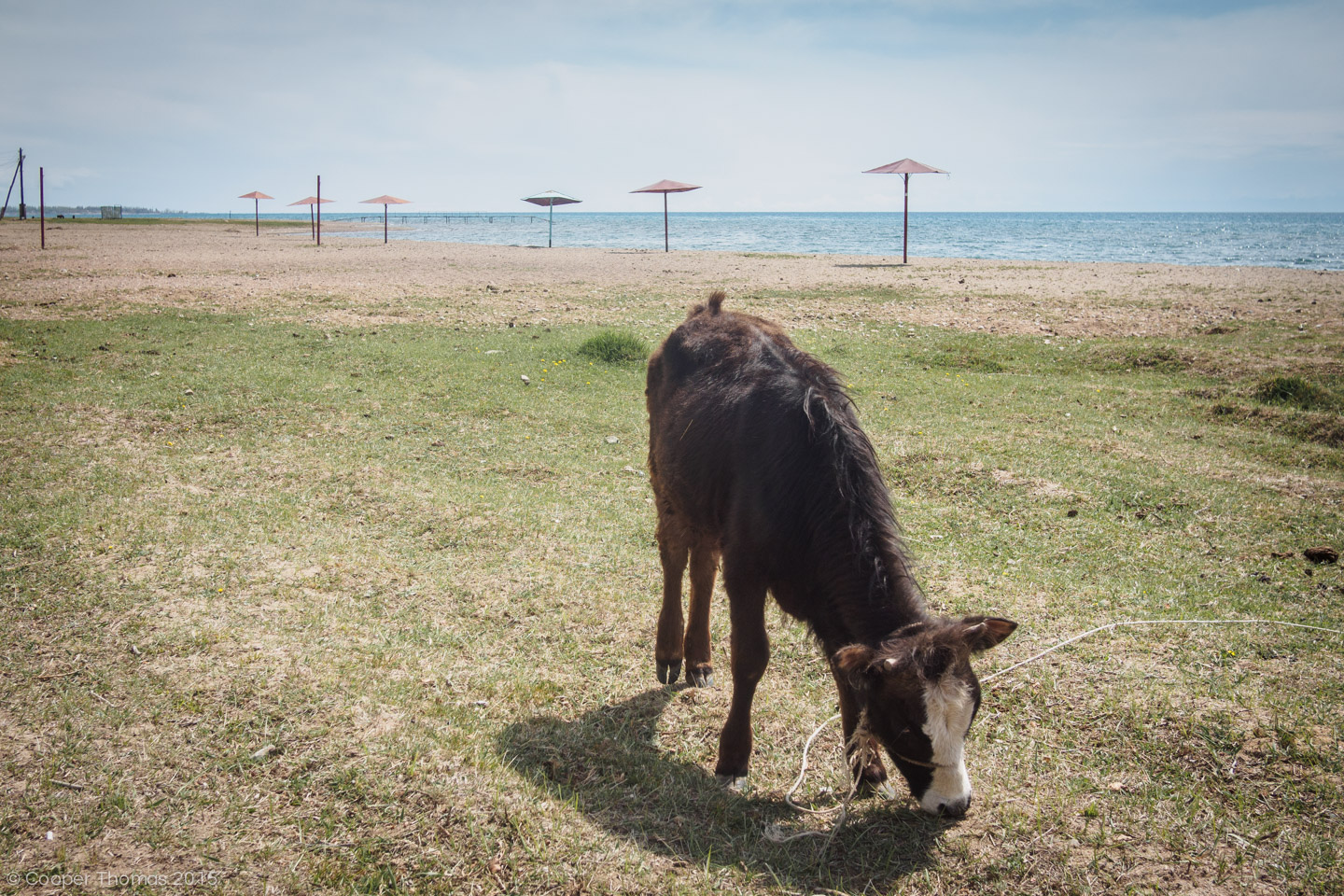
Cow grazing on Tamchy beach
I’ve never actually been to Issyk Köl in the summer. Or on a clear day, for that matter. I most recently visited the lake in early May, spending a weekend at a friend’s guesthouse in Tamchy. This small, unassuming village sits on the northern shore of Issyk Köl, midway between regional centers Balykchy and Cholpon-Ata. So far, Tamchy has escaped the conspicuous resort-style development of the area, and remains pleasantly calm and quiet. It is notable for two reasons, however: it boasts the only international airport in the Issyk Köl region (why here, I don’t know), and it was once a popular summer hangout for Kyrgyz gangsters. A few years back, one enigmatic capo decided to build himself a castle in Tamchy, replete with towers and parapets. Unfortunately, he was gunned down before his castle was finished. Now, it’s a business hotel. I don’t have any photos of the castle-hotel, because I am an idiot and forgot my camera.
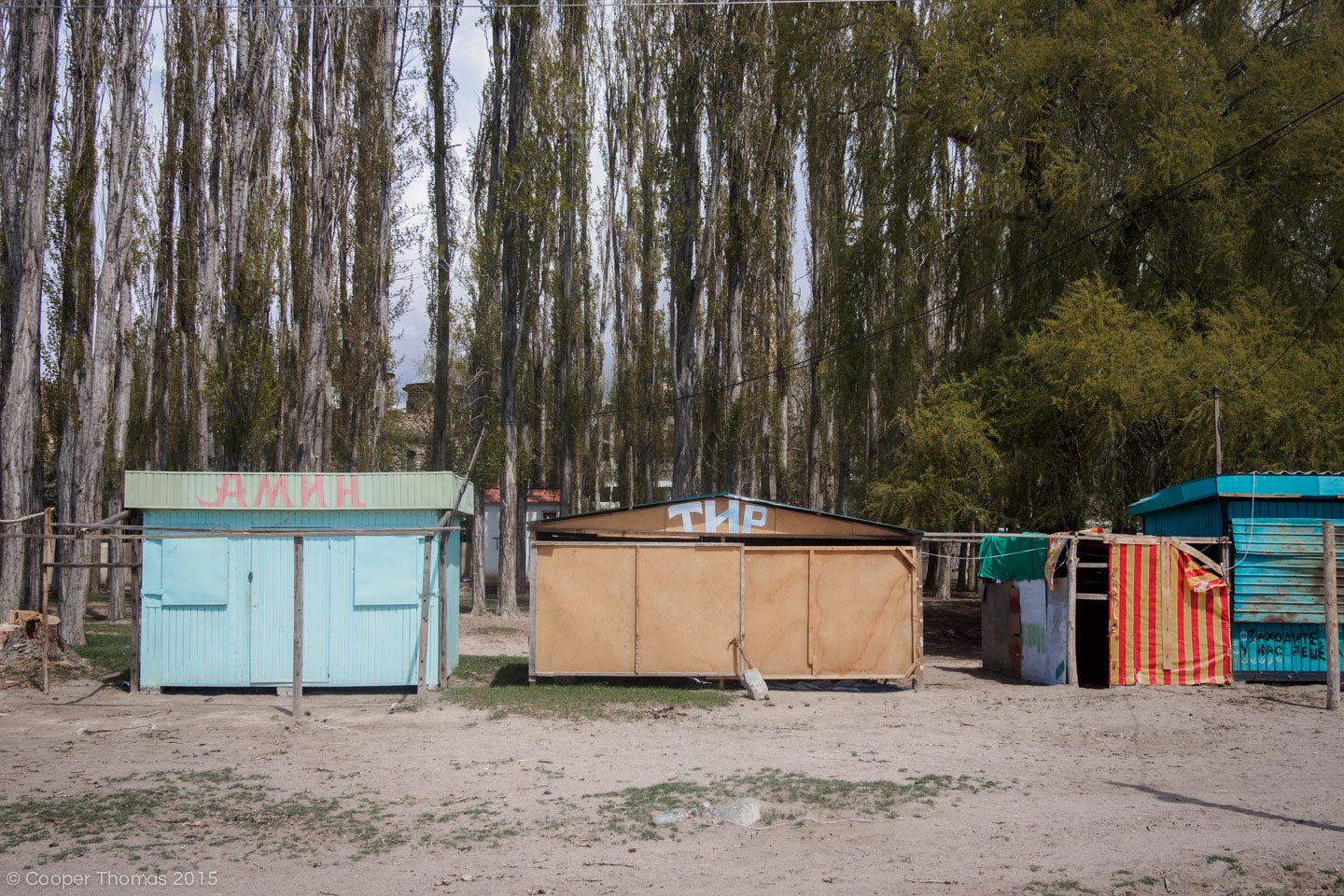
Shuttered shorefront shops in Tamchy
In the summertime, Tamchy fills up with foreign trekkers, Bishkek families, and others seeking a quieter alternative to the nearby resorts. Many Tamchy locals rent out their extra rooms to travelers, or convert dining rooms into makeshift restaurants. But during the nine-month offseason, the village all but shuts down. When I was there, all the restaurants were closed, along with most shops. Even the ubiquitous tire vulcanization garage – a staple of Central Asian roadside architecture – was closed. Cows and sheep, not tourists, controlled the beach.
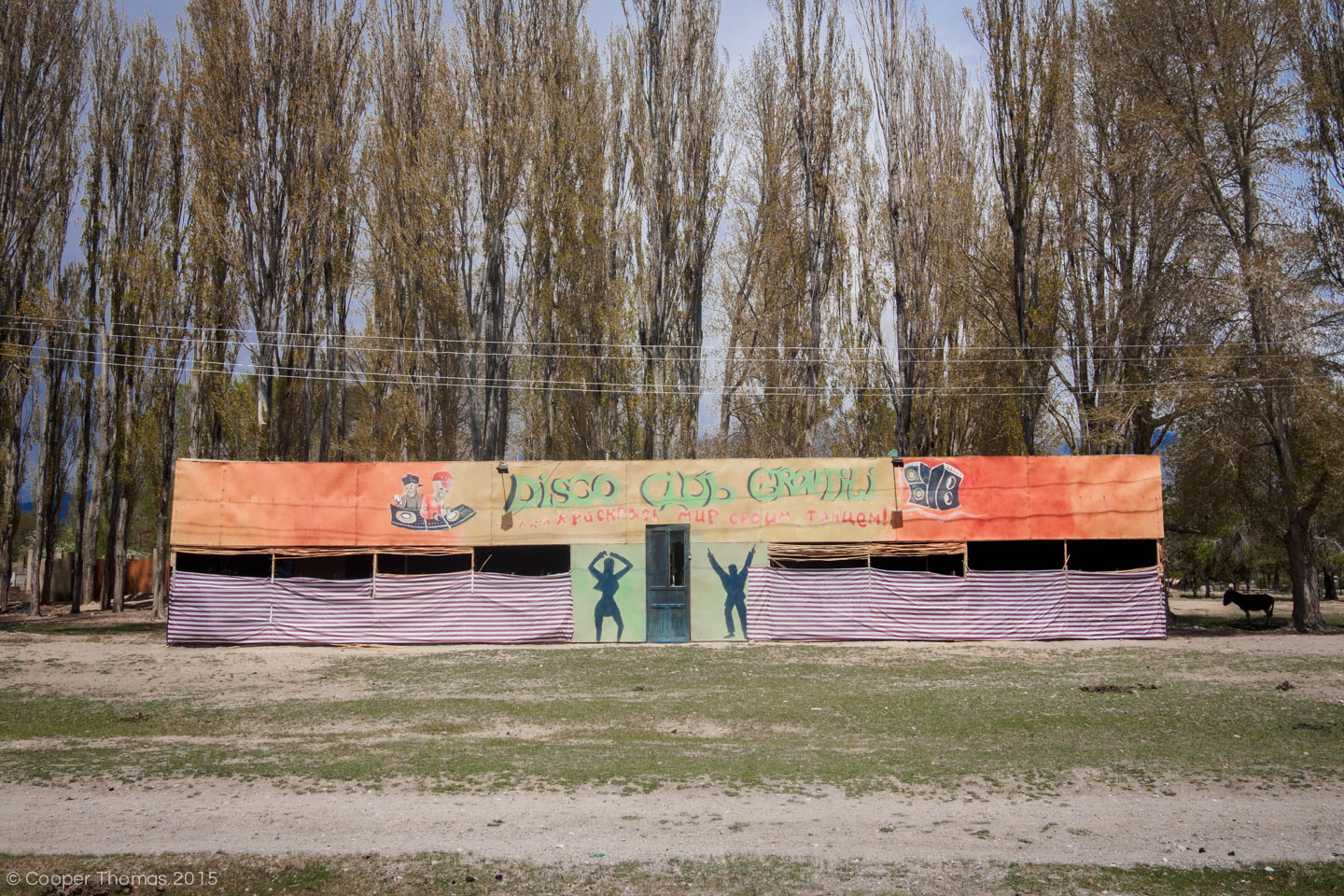
Tamchy may be quiet, but not too quiet for Disco Club Graffiti. The subtitle reads, “Paint the world with your dancing!”
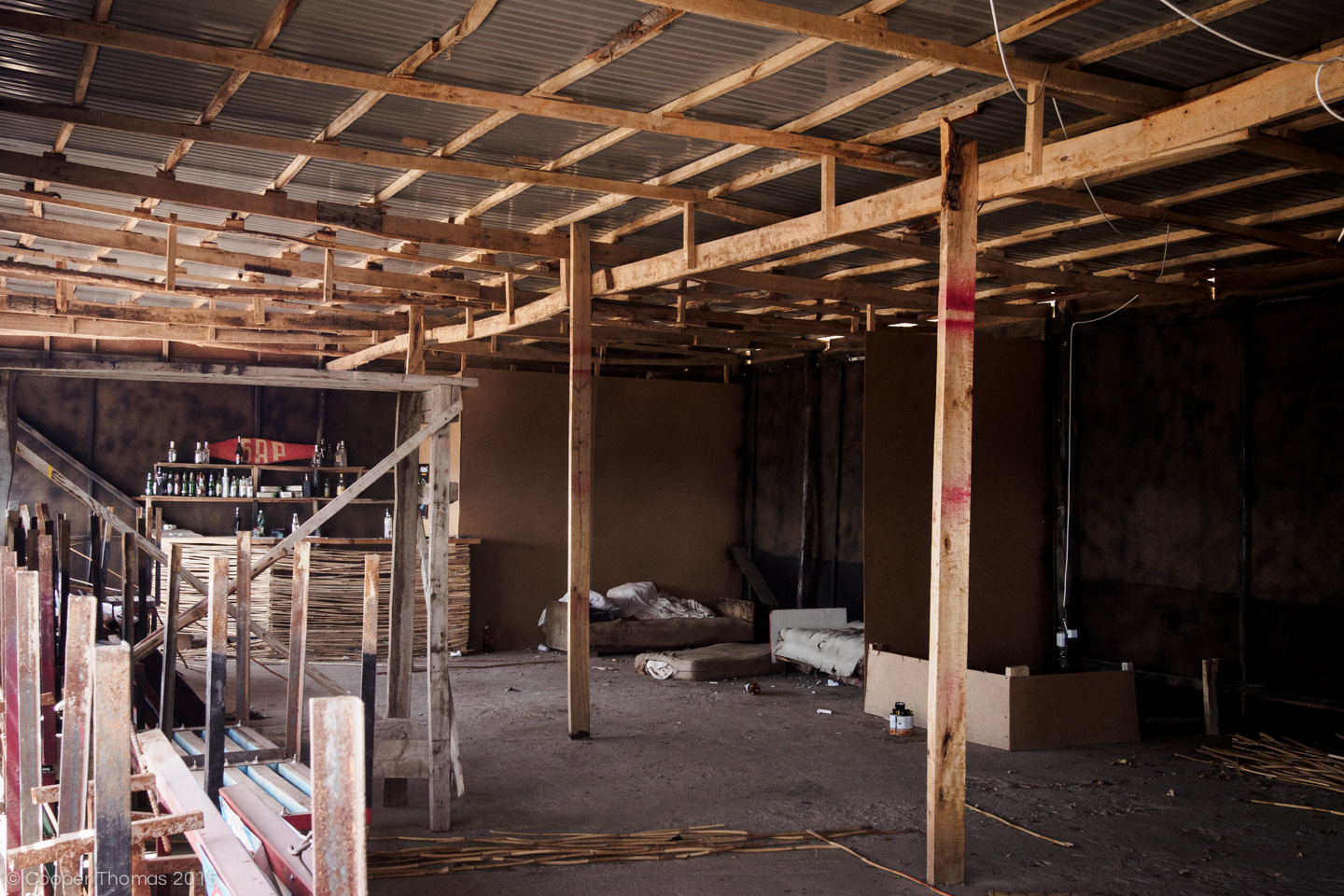
Interior of Disco Club Graffiti. The bar is still stocked, FYI
My friend’s guesthouse was located just a stone’s throw from the water, separated from the beach by a beautiful poplar grove.
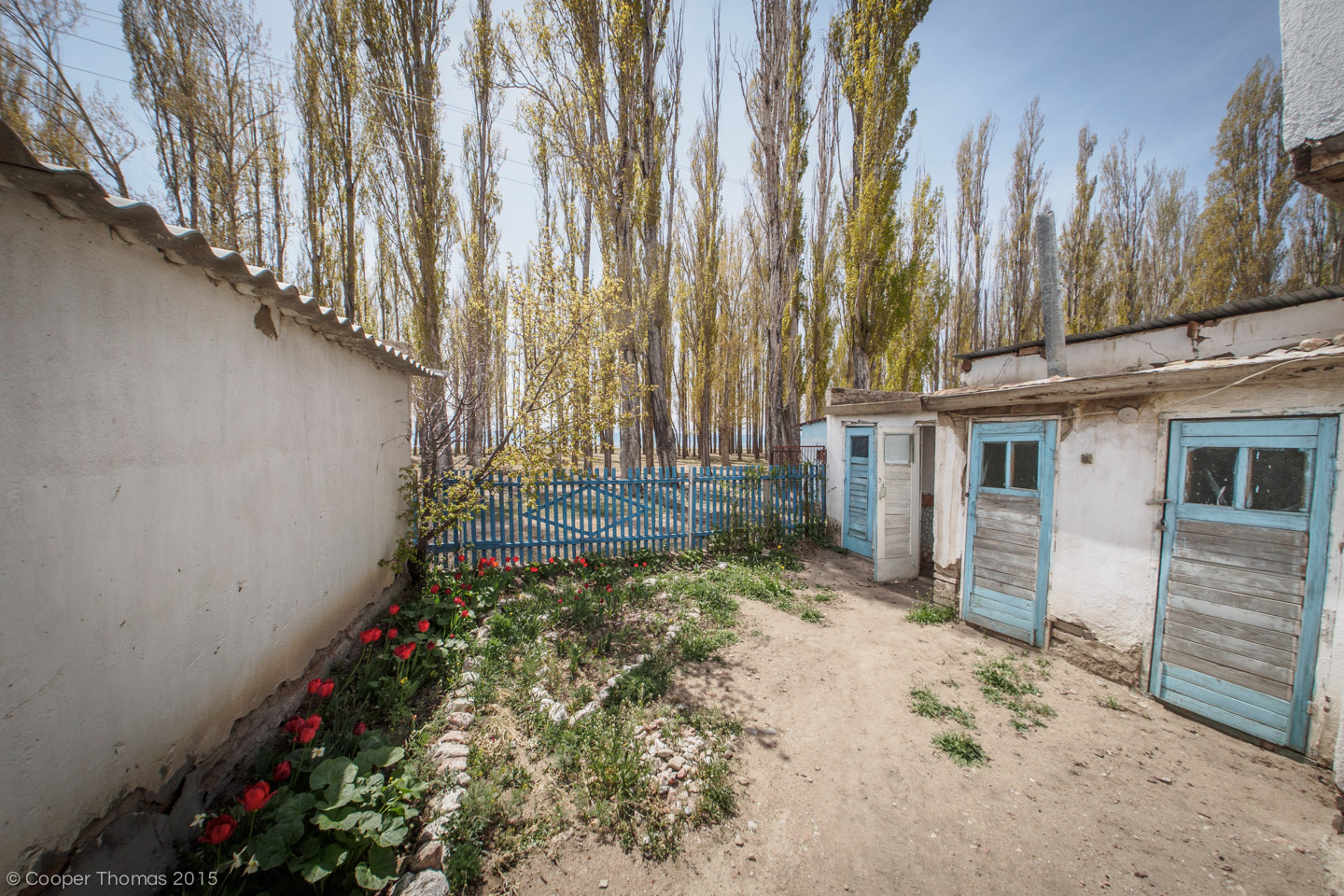
Outhouses at Tamchy guesthouse (nice, right?)
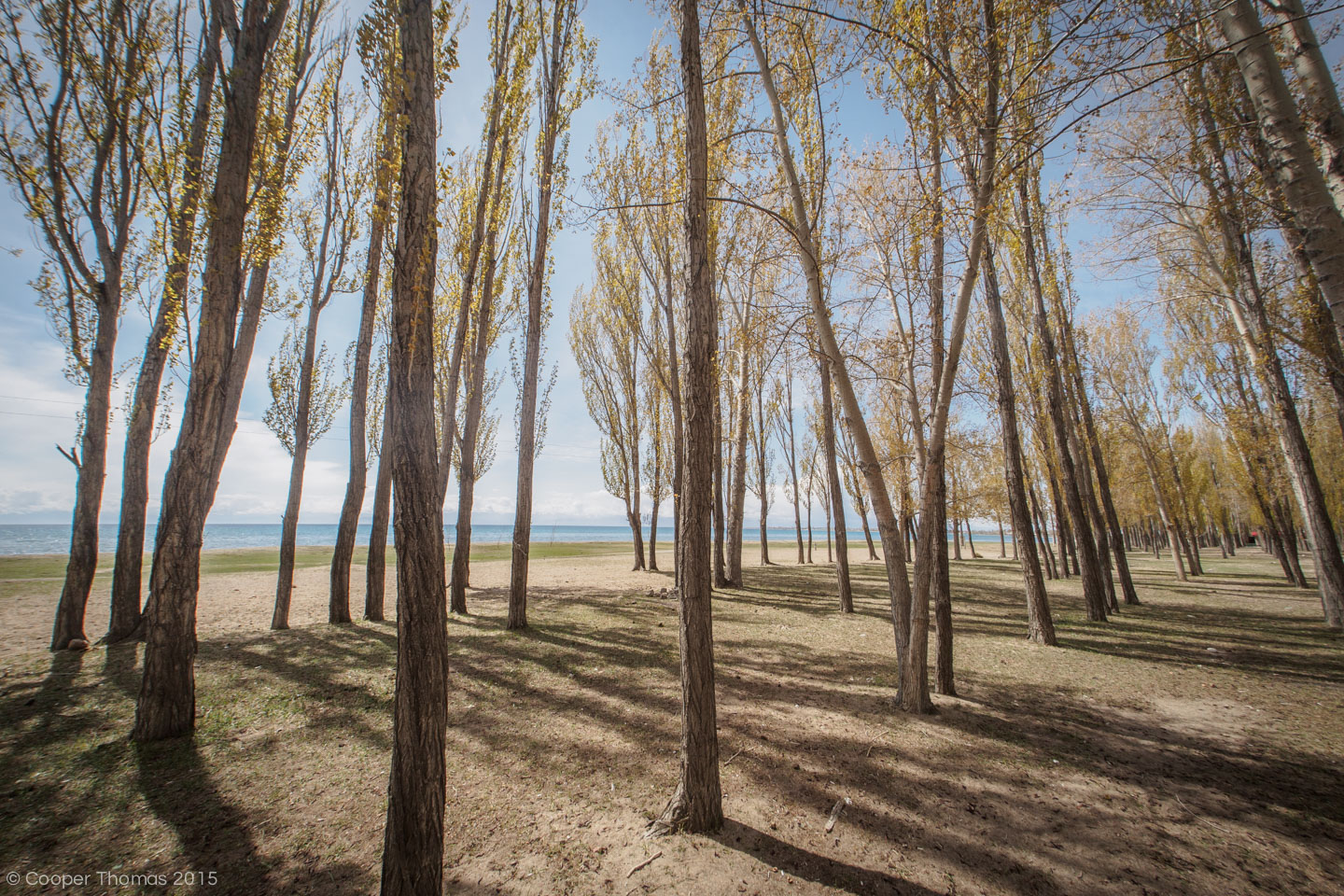
Poplar trees in Tamchy
It’s easy enough to imagine the shores of Issyk Köl in high season – gleeful yelps of water-winged children splashing in the shallows, jetskis loudly skittering across the water, vendors hawking their wares, the steady thump of last year’s pop hit, emanating from Disco Club Graffiti. Personally, I appreciate the quiet offseason vibes.
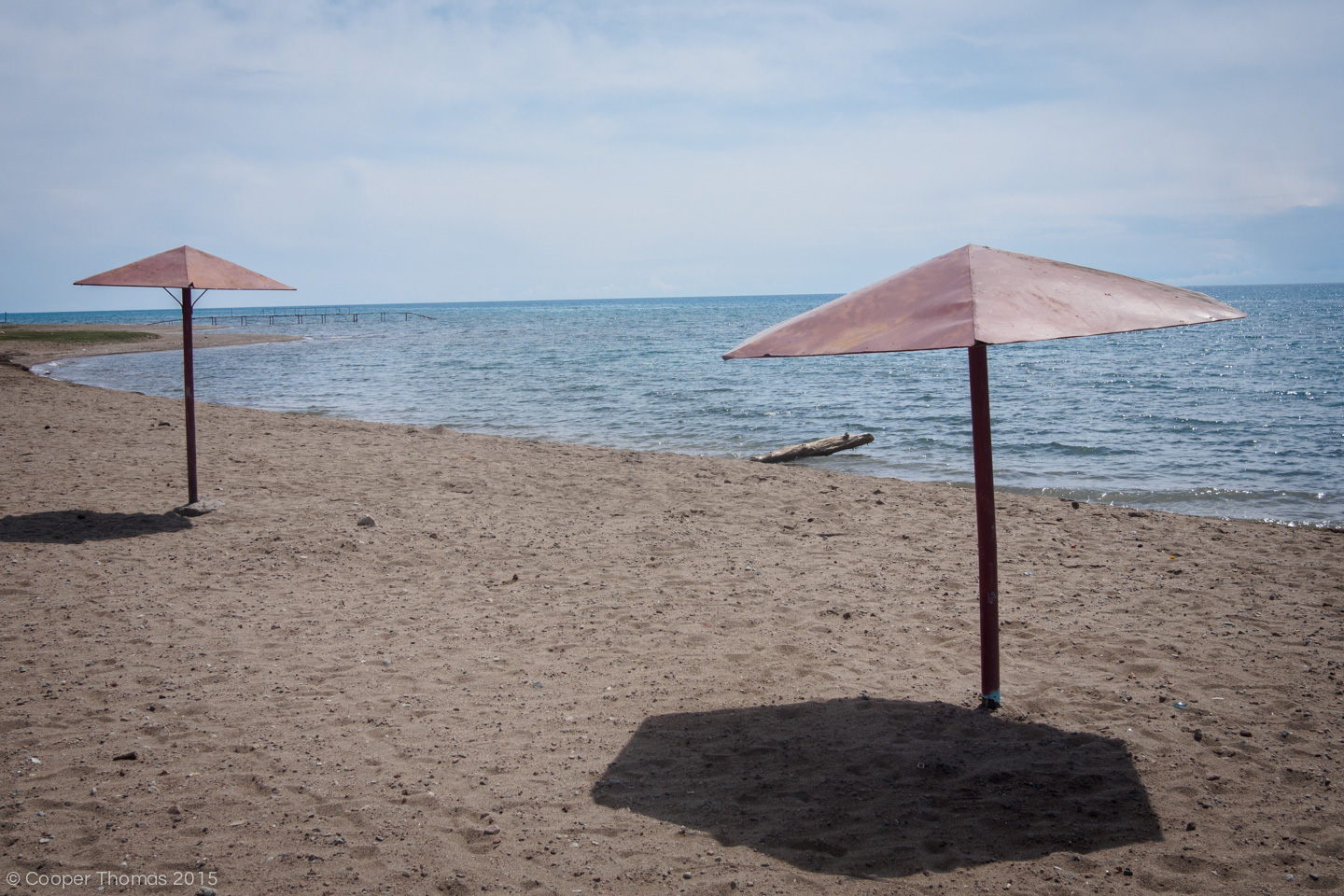
Köl Tör
While Issyk Köl is accessible year-round, many of Kyrgyzstan’s smaller lakes are perched so high in the mountains that they can only be reached in the summer, when the snow has melted and spring rains subsided. Chief among these isolated jewels are Köl Tör and Song Köl, both of which I visited during my last month in Kyrgyzstan.
Köl Tor, located just 100km from Bishkek, makes for an excellent daytrip from the Kyrgyz capital. To reach the small but enchanting lake, one must undertake a steep seven-kilometer hike that passes through forest, meadow, and jailoo. The hike can be quite strenuous, as it gains over a kilometer in altitude, but visitors are rewarded with lovely views of the valleys below. In the spring and early summer, wildflowers sprout up everywhere, painting the hillside bright shades of yellow, blue, and purple.
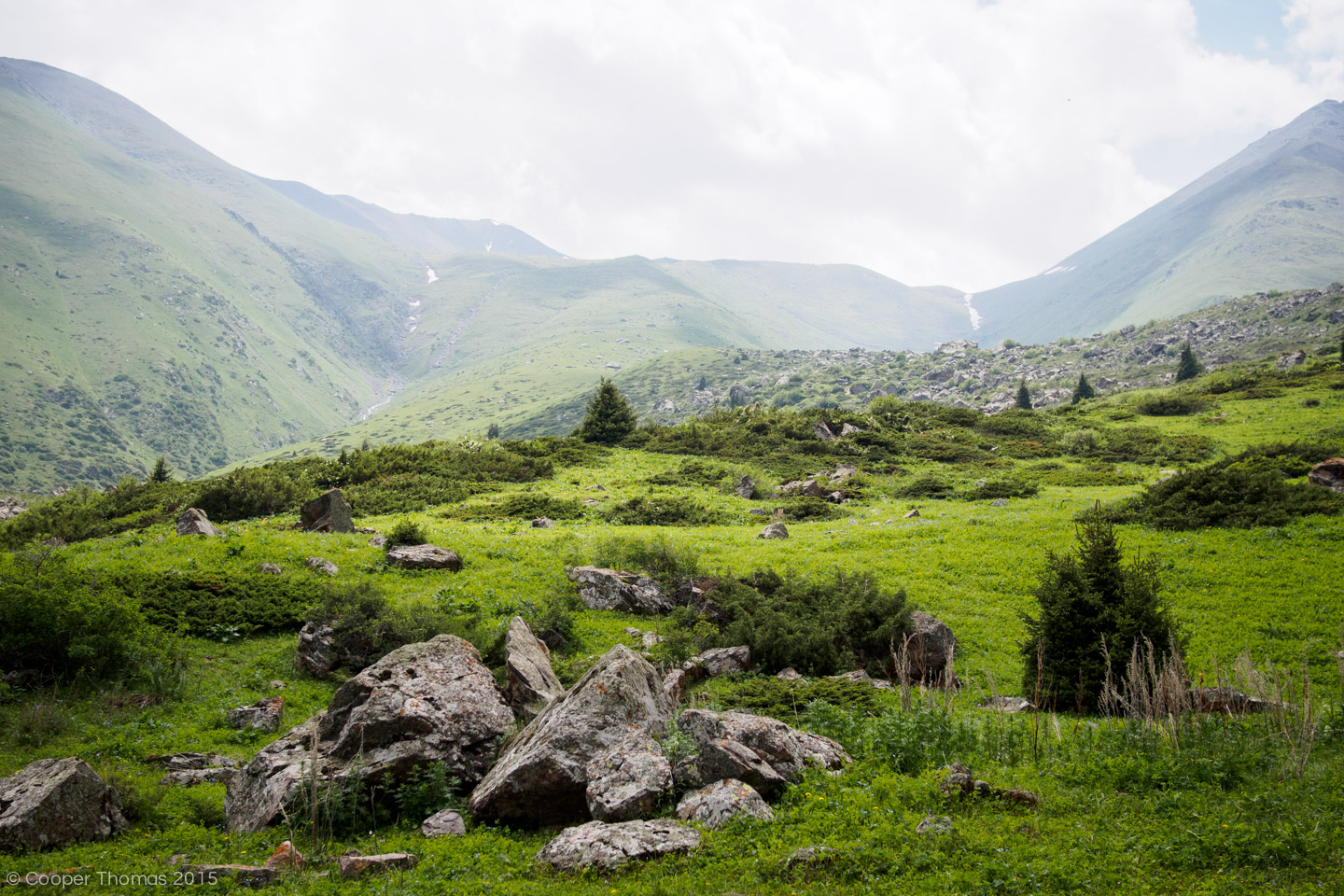
The path to Köl Tör
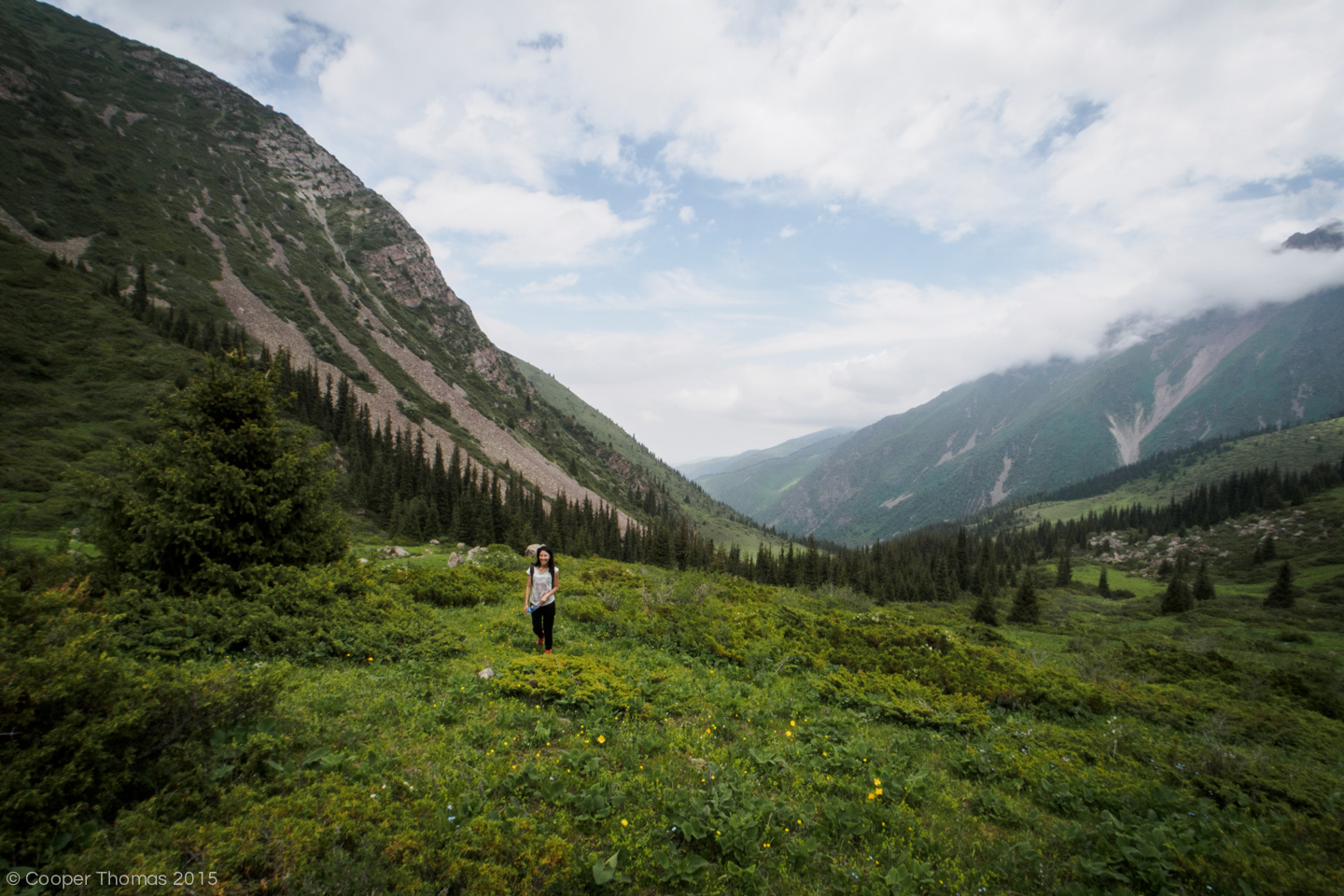
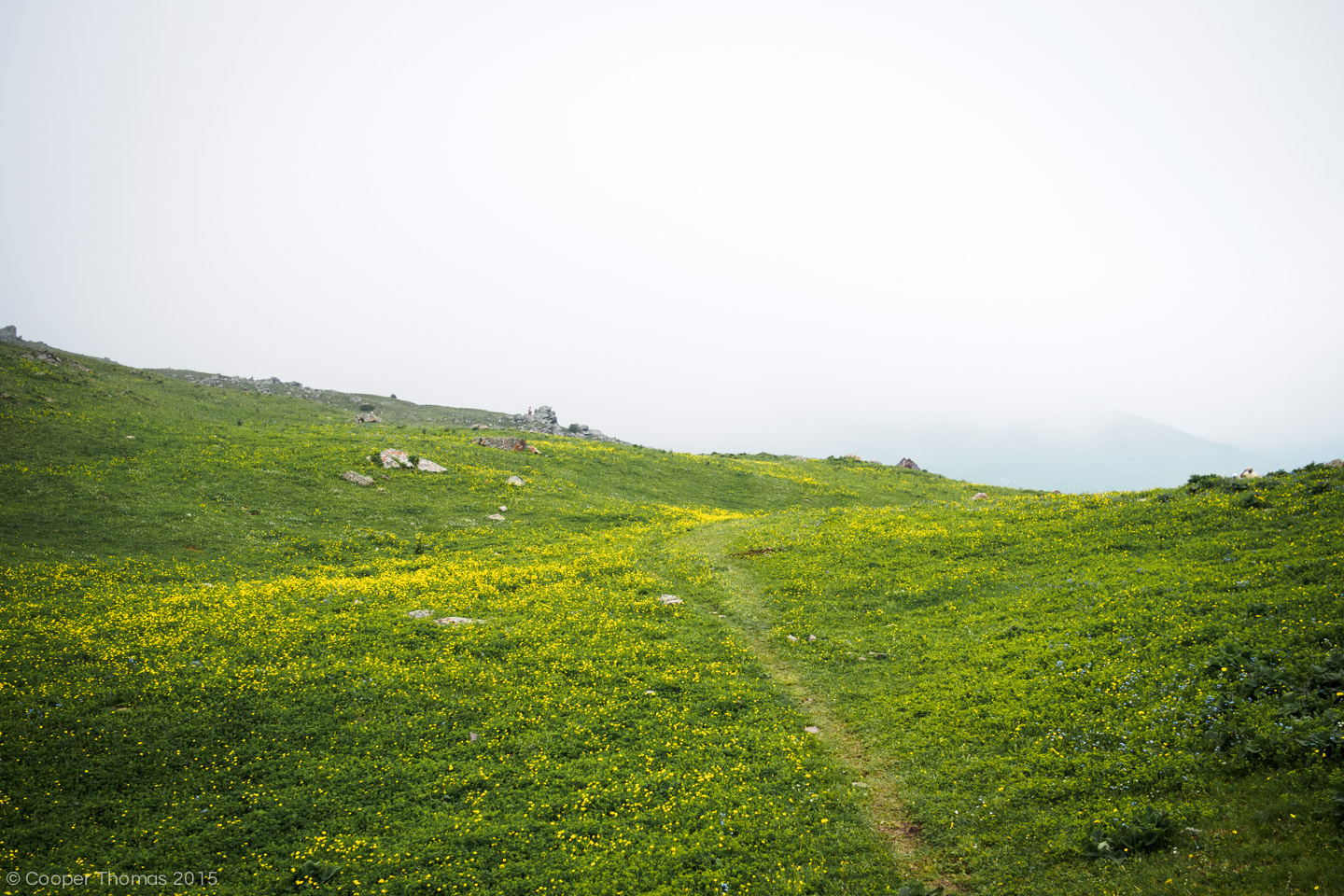
I visited Köl Tör on my last weekend in Kyrgyzstan. The excellent Kyrgyz Trekking Union organizes weekly trips to the lake (and other sites in the Chuy Valley), so Meerim and I made an impulsive decision to check it out. The lake itself is quite small, but what makes it so memorable is the color of its water: naturally occurring minerals and radioactive waste heavy metals in the rocks have dyed it a milky turquoise blue, and the lake changes color depending on the angle of the sun. Though we visited the lake on a damp grey day, the water seemed to glow. I’ve heard the effect is even more stunning on clear days, when the blue sky reflects off the water’s surface.
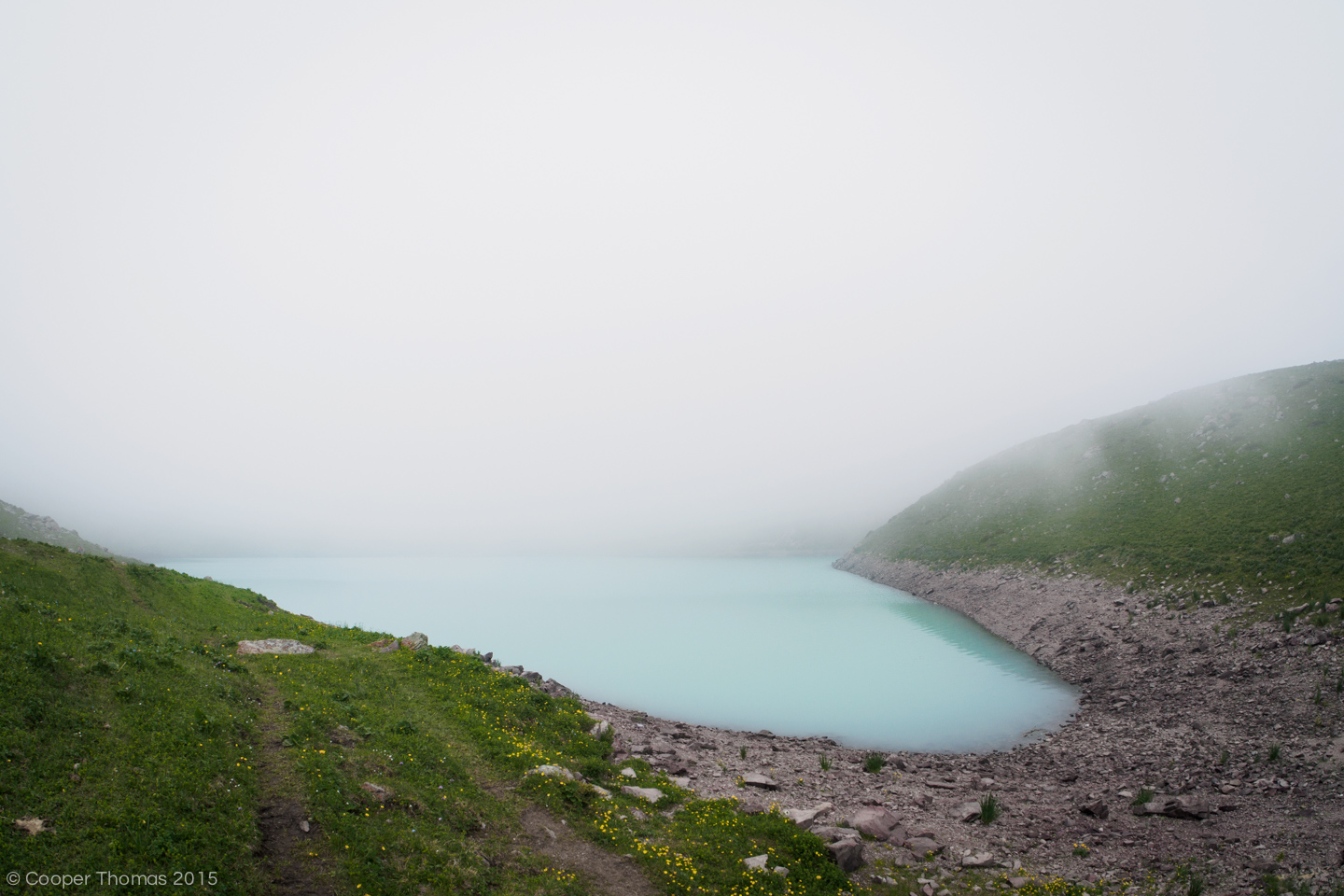
A view of Köl Tör
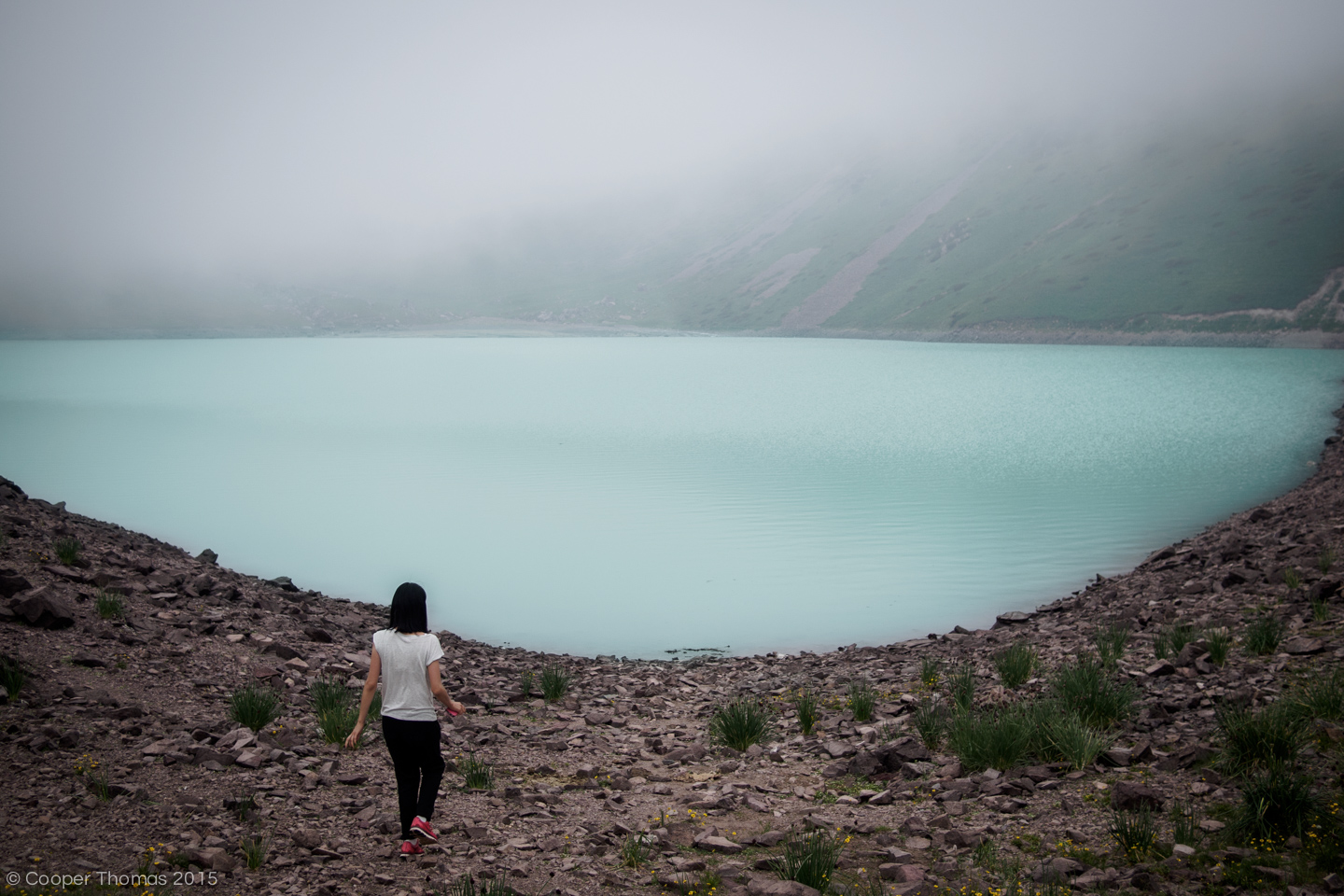
Unfortunately, the weather took a turn for the nasty shortly after we arrived at the lake, and we didn’t linger long. Large rain drops began to fall through the mist, presently giving way to a complete deluge, which turned the steep path into a slick strip of mud. My cotton shorts were quickly soaked, so that my black boxers were jarringly visible to anyone who cared to look in my direction. My sneakers sloshed with water. By the time we reached the bottom of the mountain slopes, still about 2 kilometers from the parking lot, the storm had reached such biblical proportions that we simply splashed through the puddles, completely soaked to the bone. Fortunately, a pot of tea in the hut near the parking lot warmed us right up, and I slept the whole marshrutka ride back to Bishkek.
Song Köl
Song Köl is one of the most pristinely beautiful landscapes in Kyrgyzstan. And in a country defined by pristine alpine landscapes, that’s a pretty bold statement. Part of Song Köl’s beauty derives from its isolation: the lake is so inaccessible that it can only be reached by 4WD vehicles for two or three months out of the year. There’s no electricity here, cell service, or plumbing – just a few yurts and a whole lot of animals. Nestled in the mountains of wild Naryn Province, and surrounded by fertile jailoo, Song Köl attracts more herders than tourists every year. All the more reason to visit.
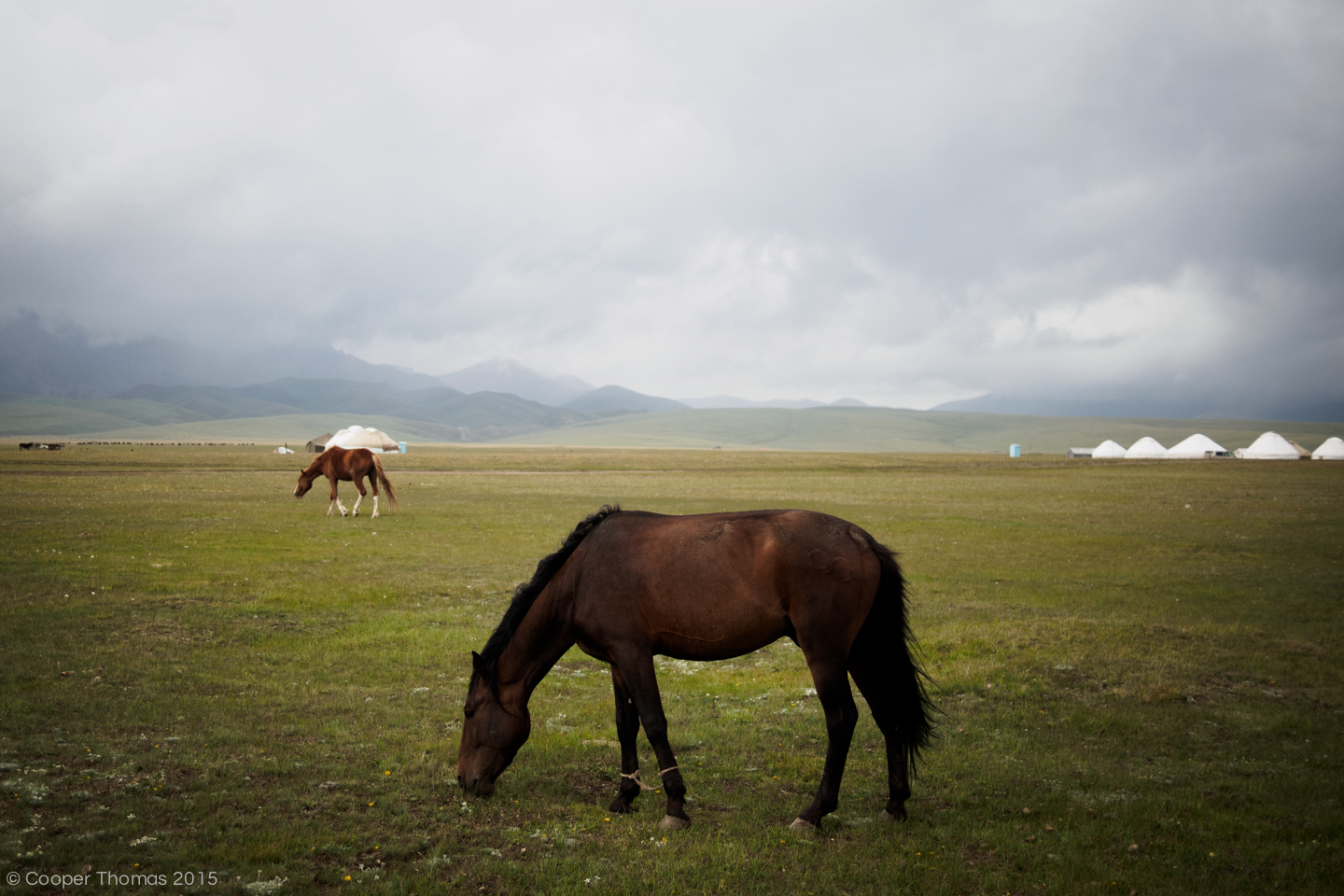
Out here with the horses
Kyrgyzstan’s community-based tourism initiative maintains several lakeside yurts in the summertime. Well, it connects visitors with local families who can provide room and board. While the rustic facilities might horrify an average glamper, the yurts are surprisingly roomy on the inside (especially when viewed through a wide-angle lens), and remain toasty through the night, thanks to a single dung-fired stove. A round opening in the ceiling provides ample natural light in daytime.
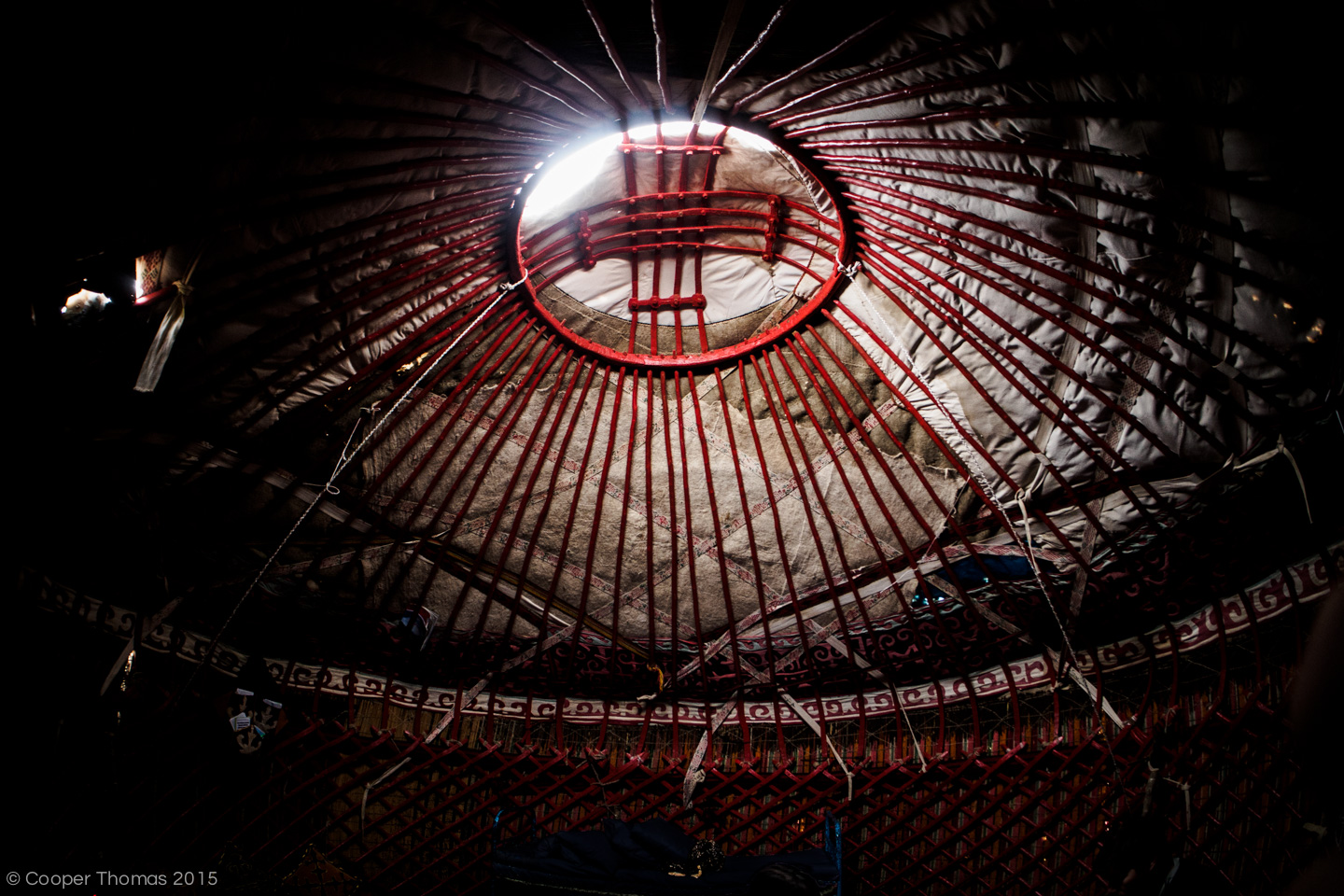
Yurt interior. The crown of the yurt, or tunduk, is a national symbol that appears on the Kyrgyz flag.
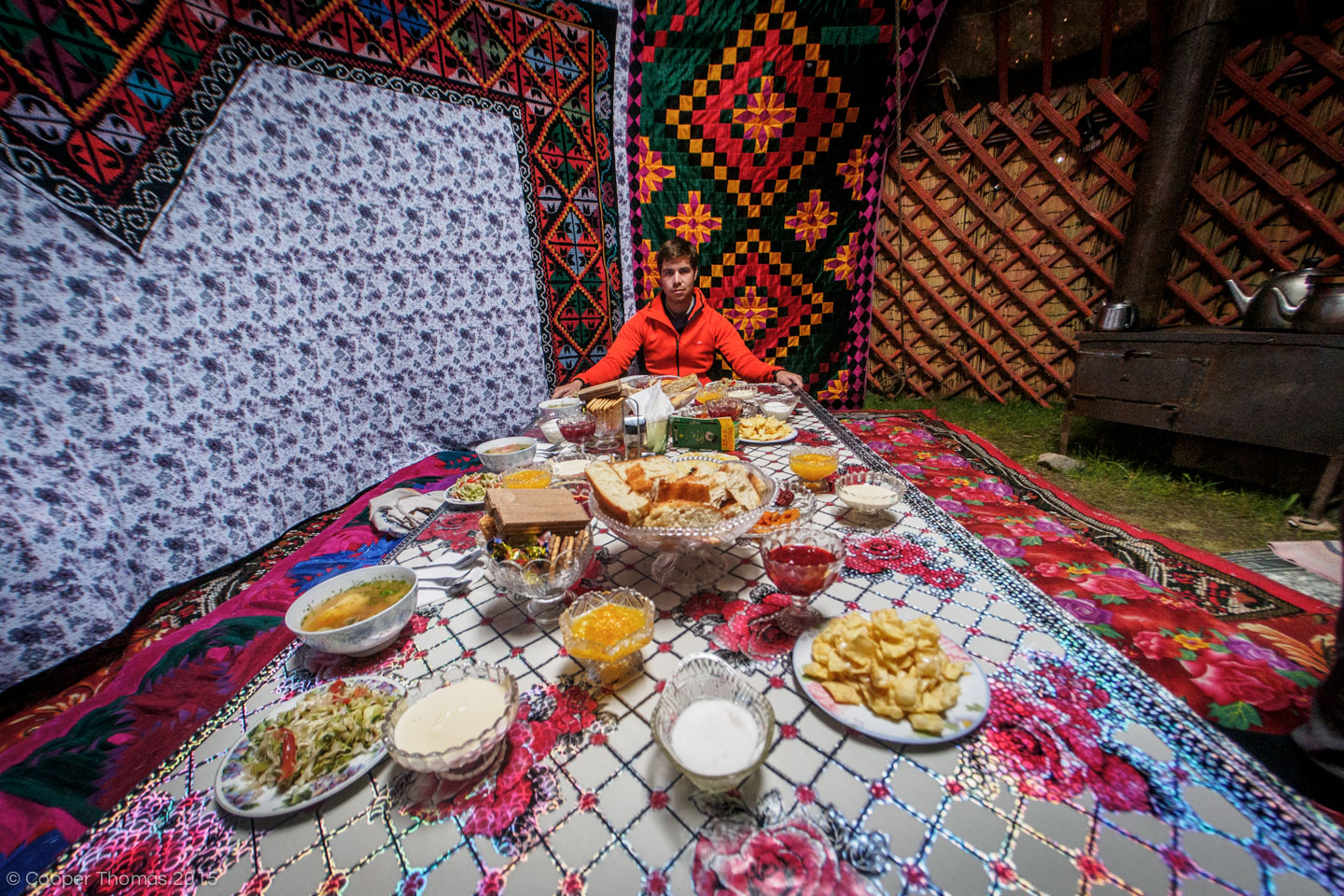
The dinner table
Shortly after we arrived, the sky darkened, and for a few minutes, the entire lake was cast in dramatic Mordor light.

A lone yurt on the shore of Song Köl
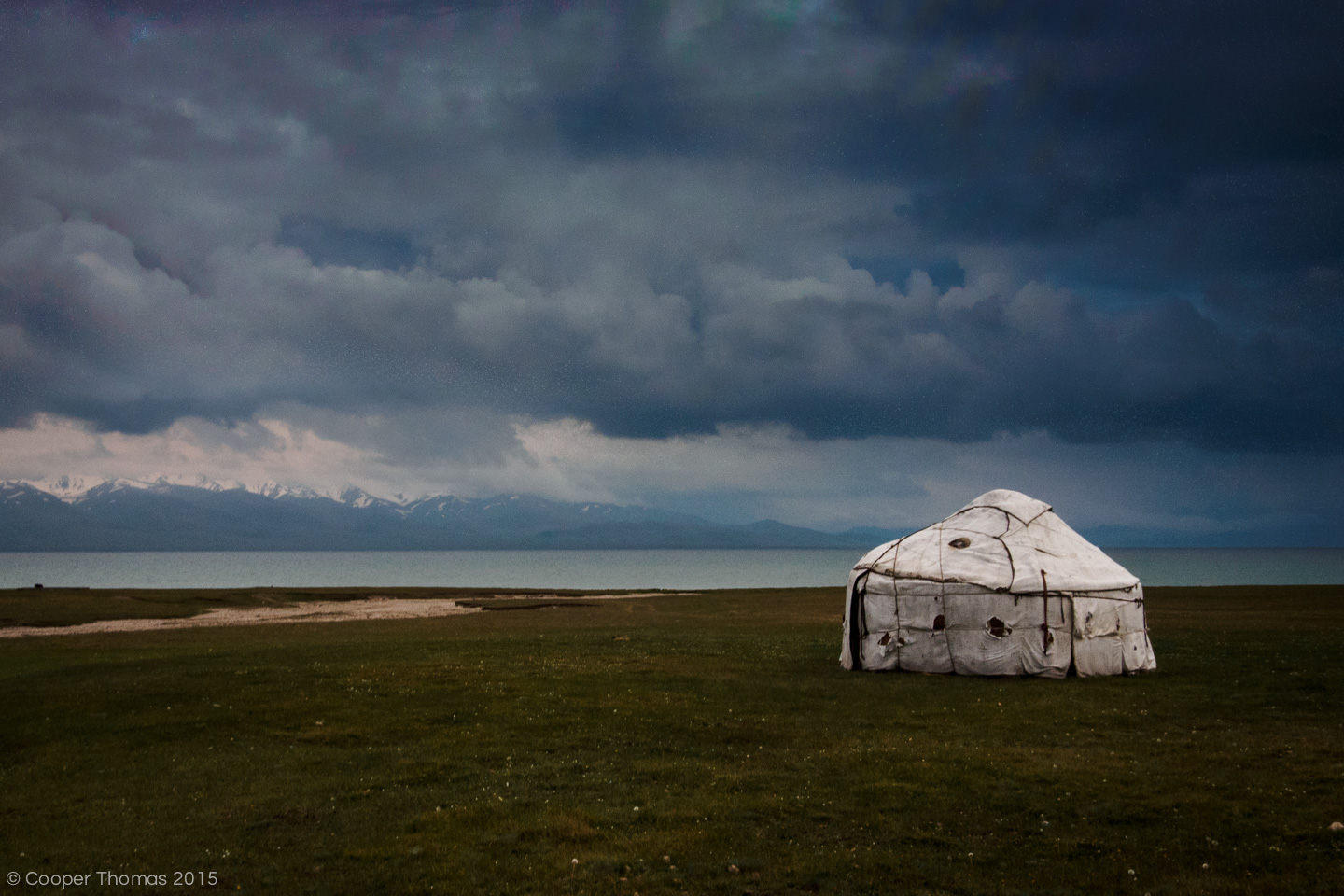
Another yurt, because yurt
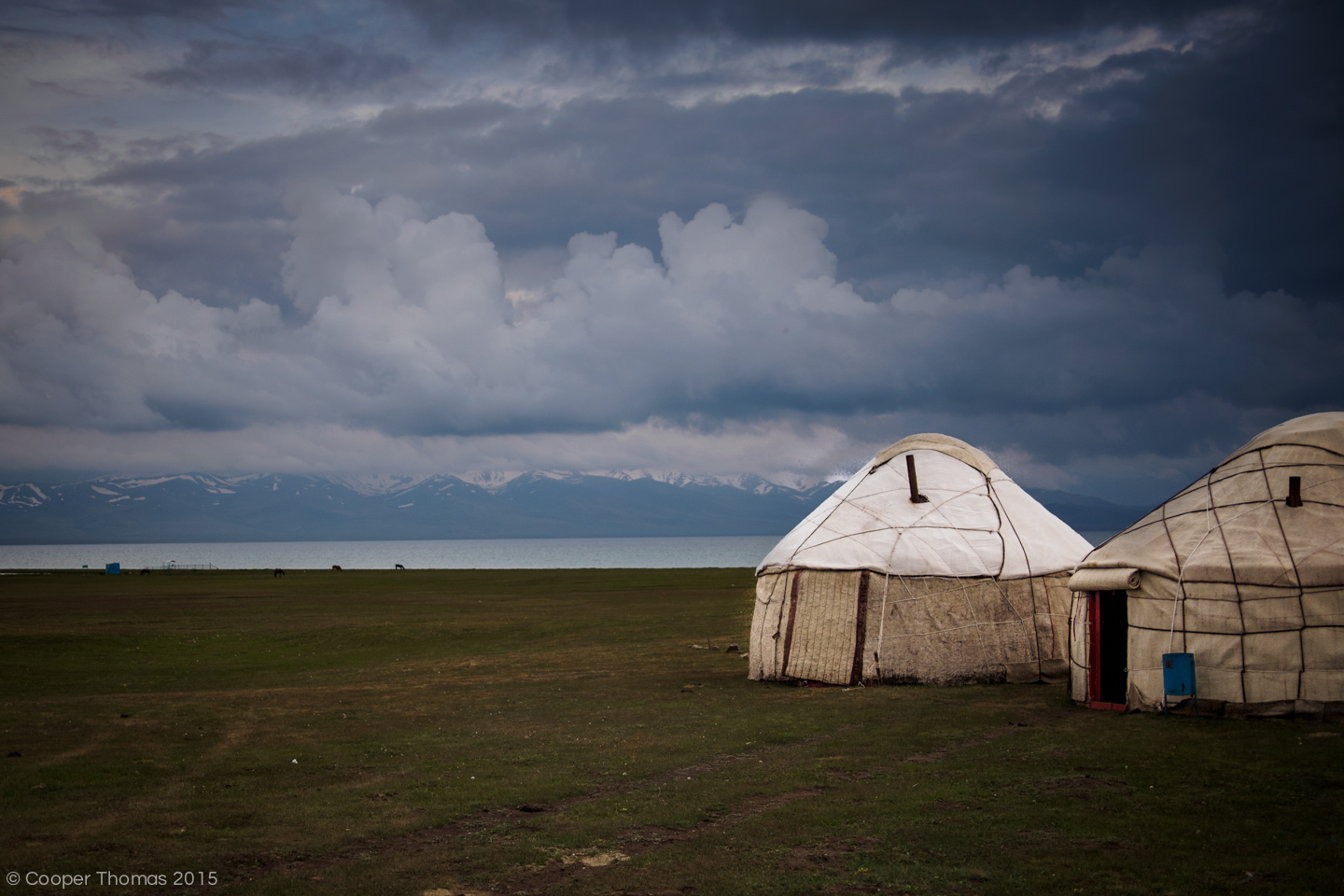
Lake yurt yurt. This might be going somewhere
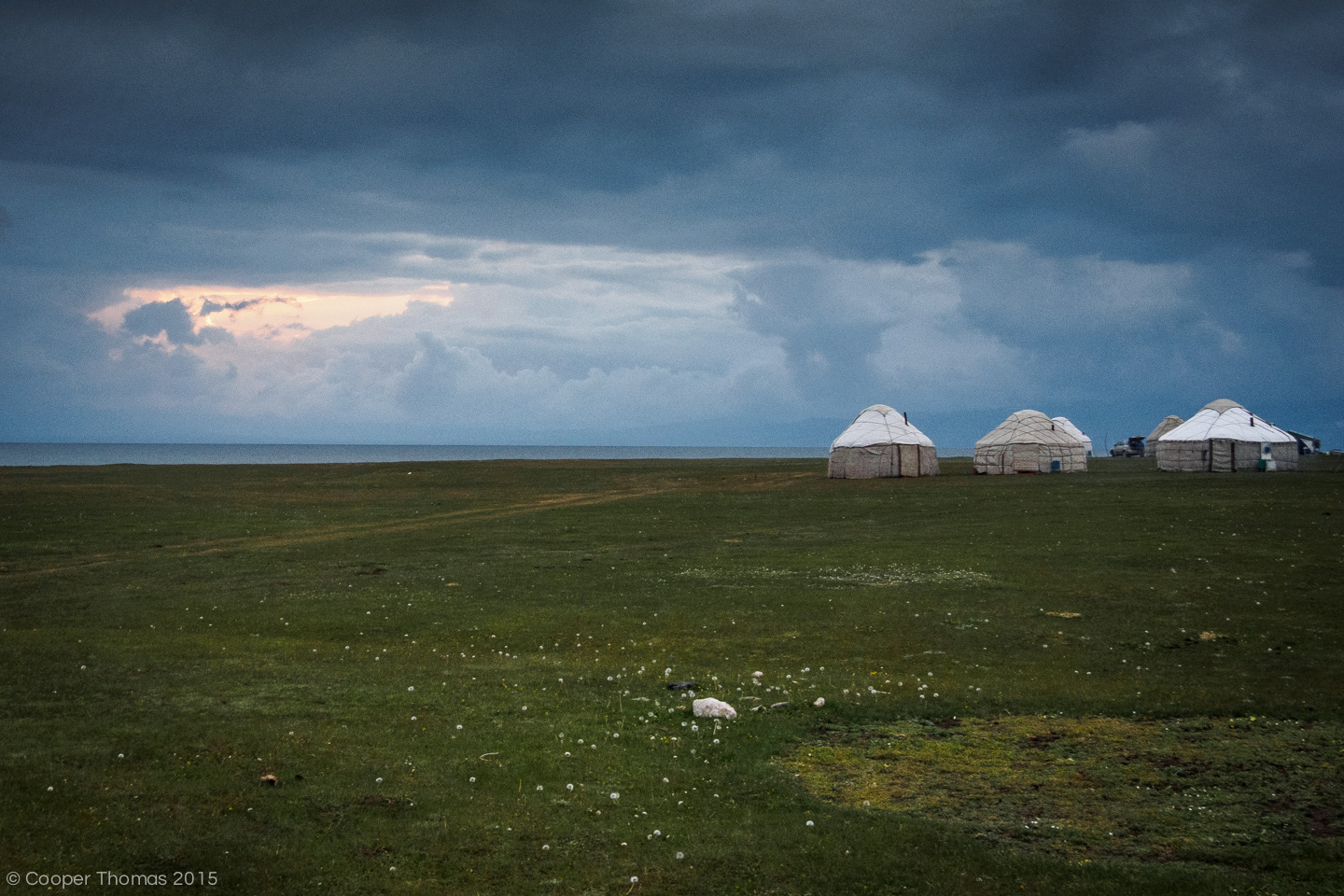
Lake yurt yurt yurt. Done.
While most foreign visitors (including us) sleep in a yurt camp on the northeast corner of the lake, single yurts speckle the shoreline, while herds of horses, sheep, cattle, and their attendant dogs meander across the jailoo. While walking through the yurt camp, Anna and I encountered a young working dog, and proceeded to train him.
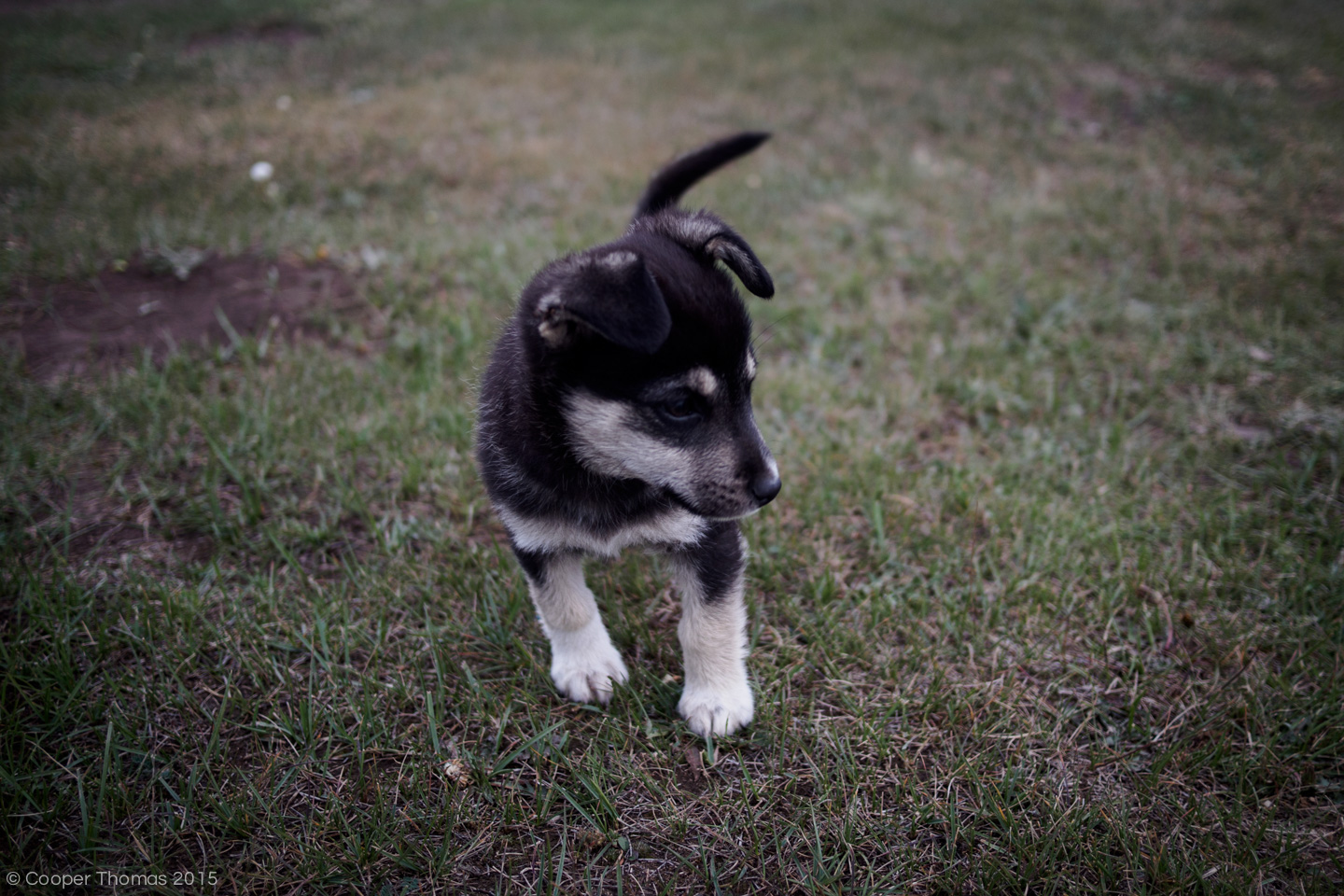
0/3
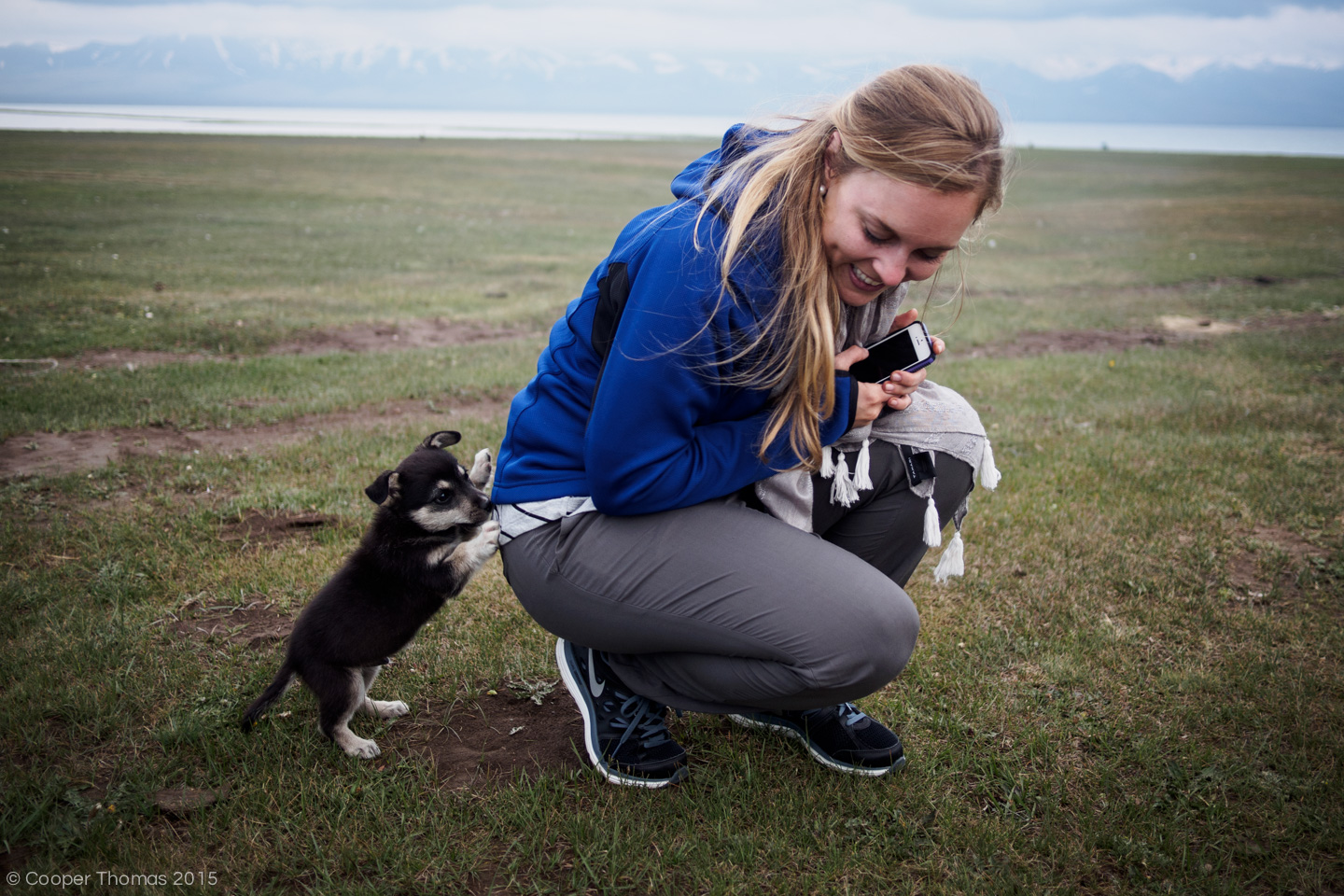
1/3
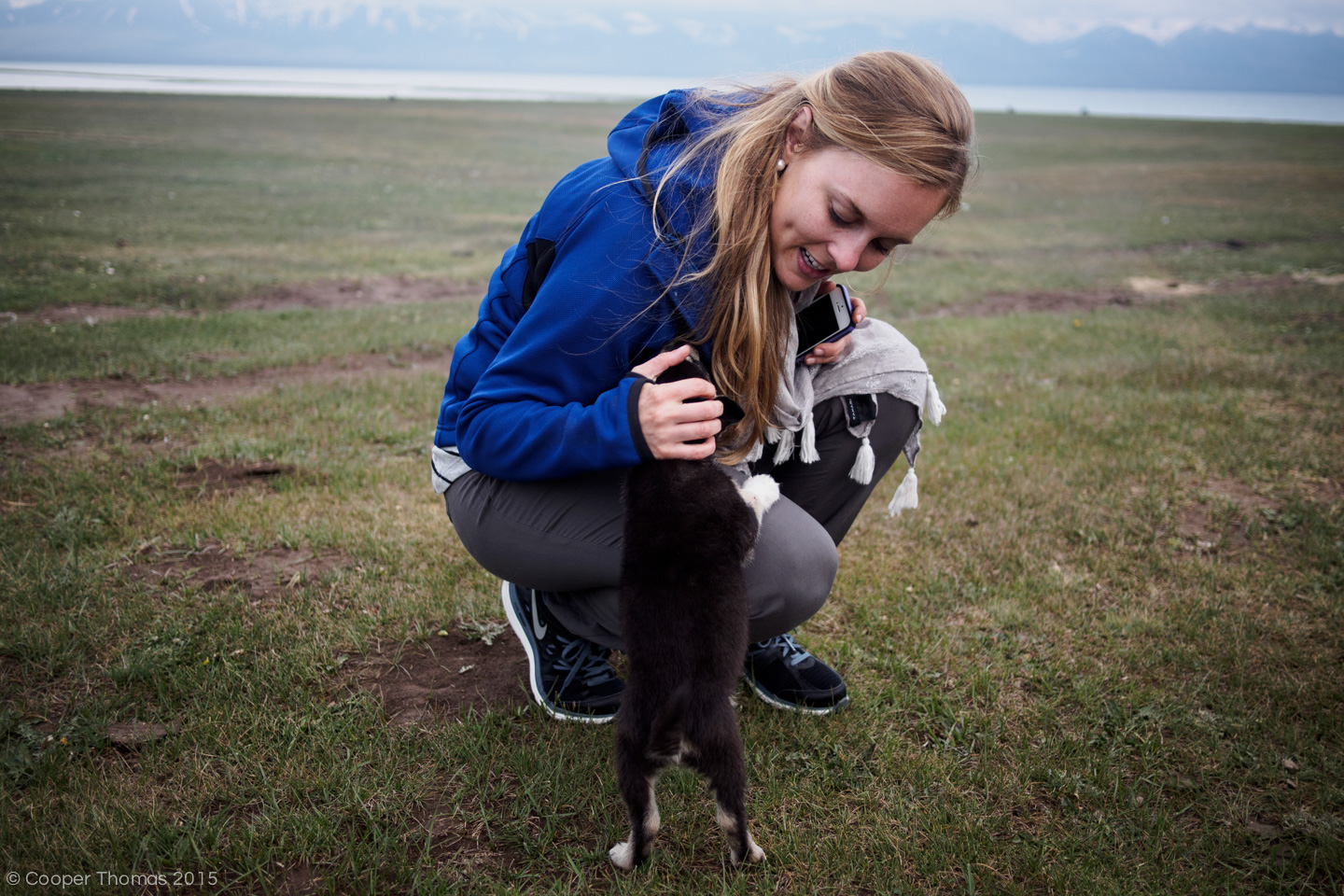
2/3
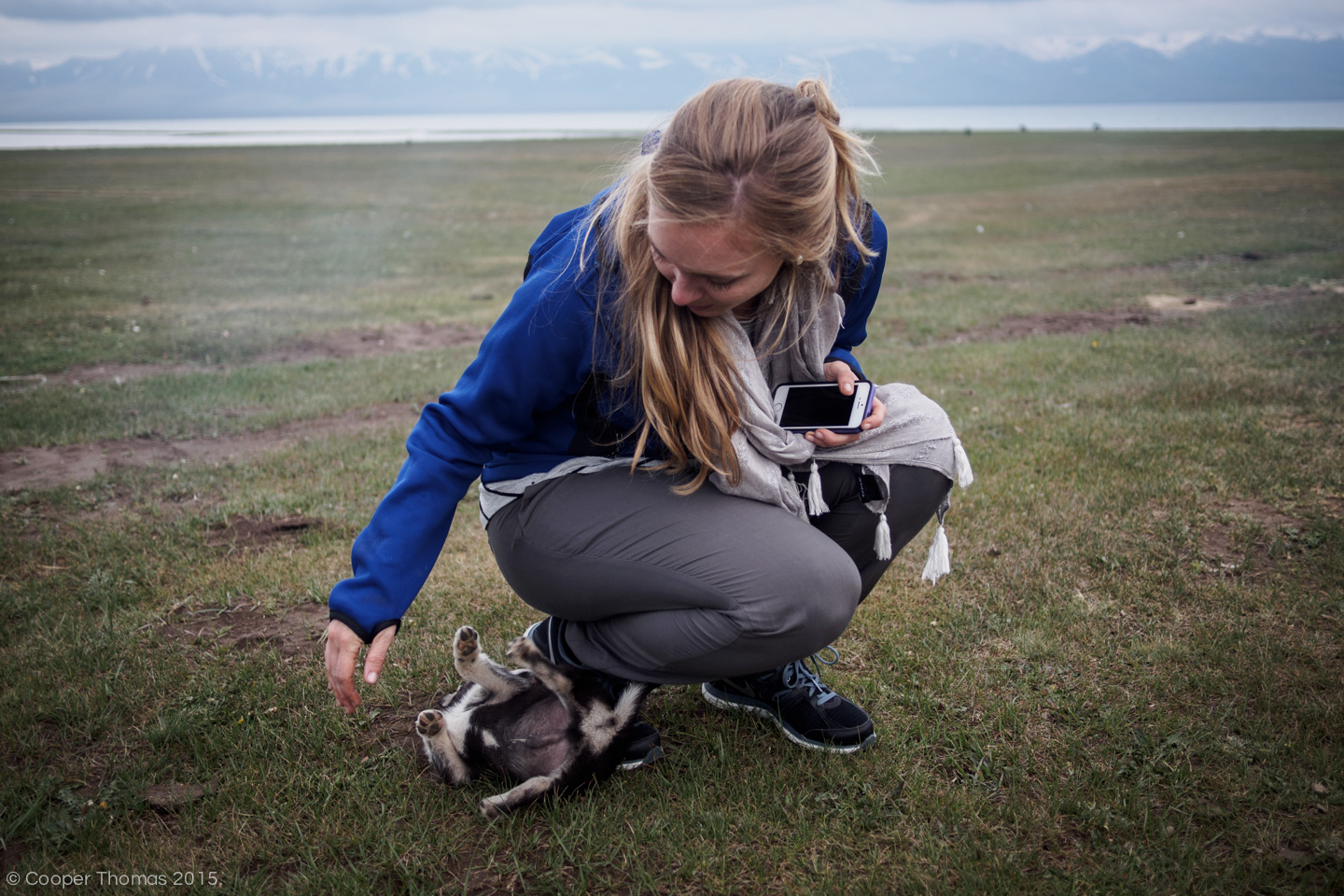
3/3
On our second day at Song Köl, we commandeered four stout Kyrgyz horses and went for a ride along the lake. These equines are considerably smaller than the big European horses you’re probably used to seeing. Mine was about seven sizes too small, in fact, and by the time we were done, I could hardly walk. Still, it was a fun experience, and I’m glad I had the opportunity to commune with a different mammal species.
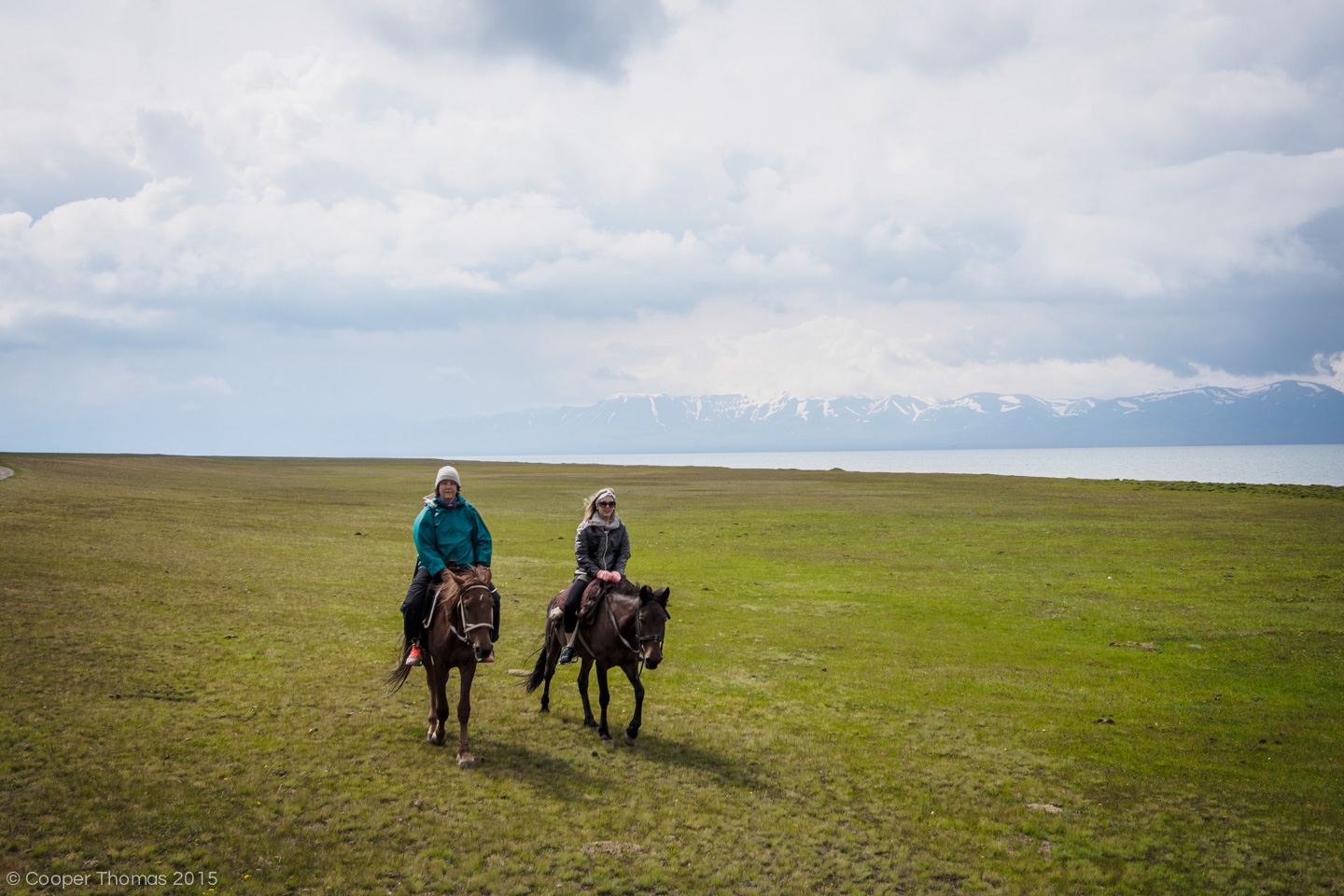
Mother and sister killing the horseriding game
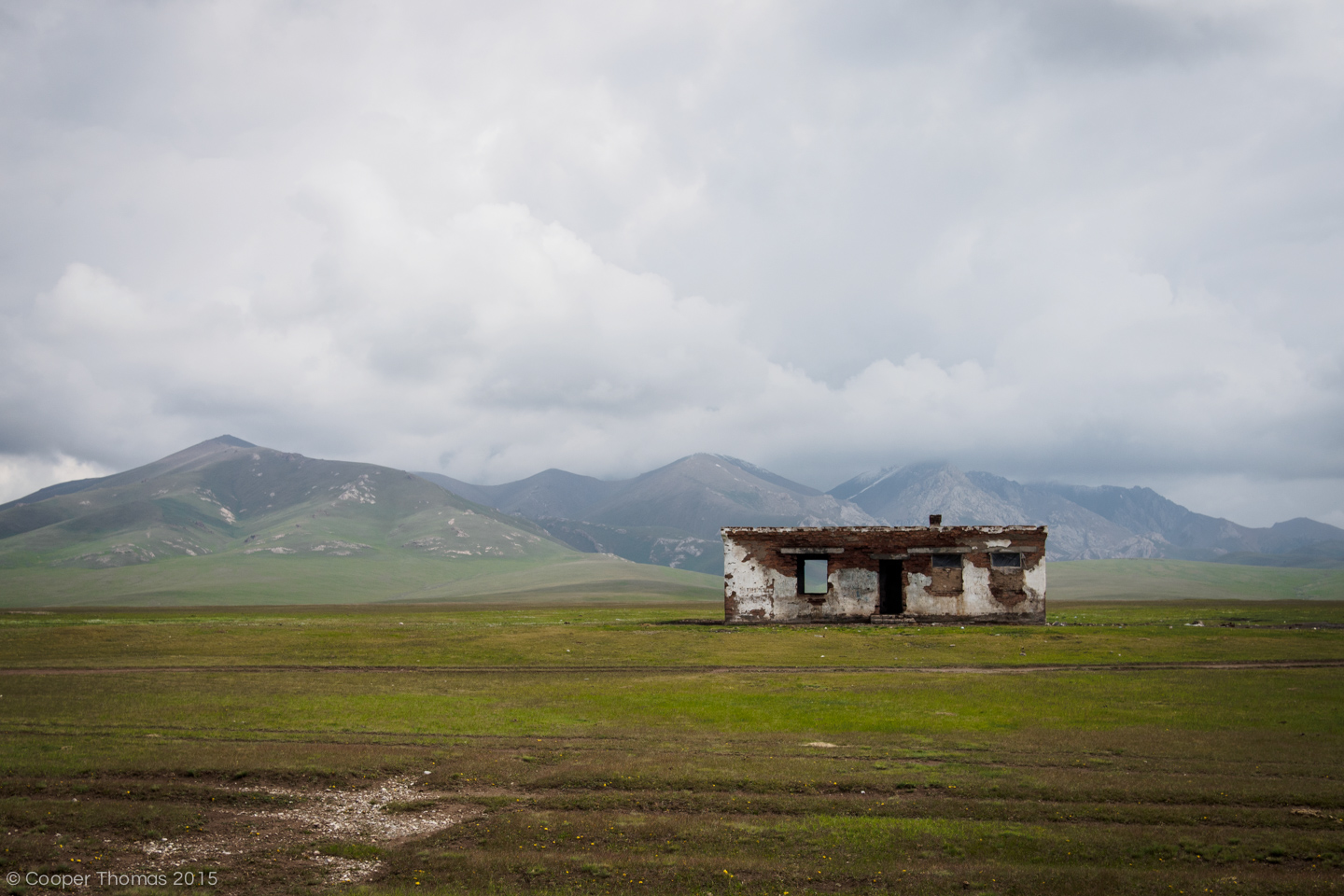
Halfway house
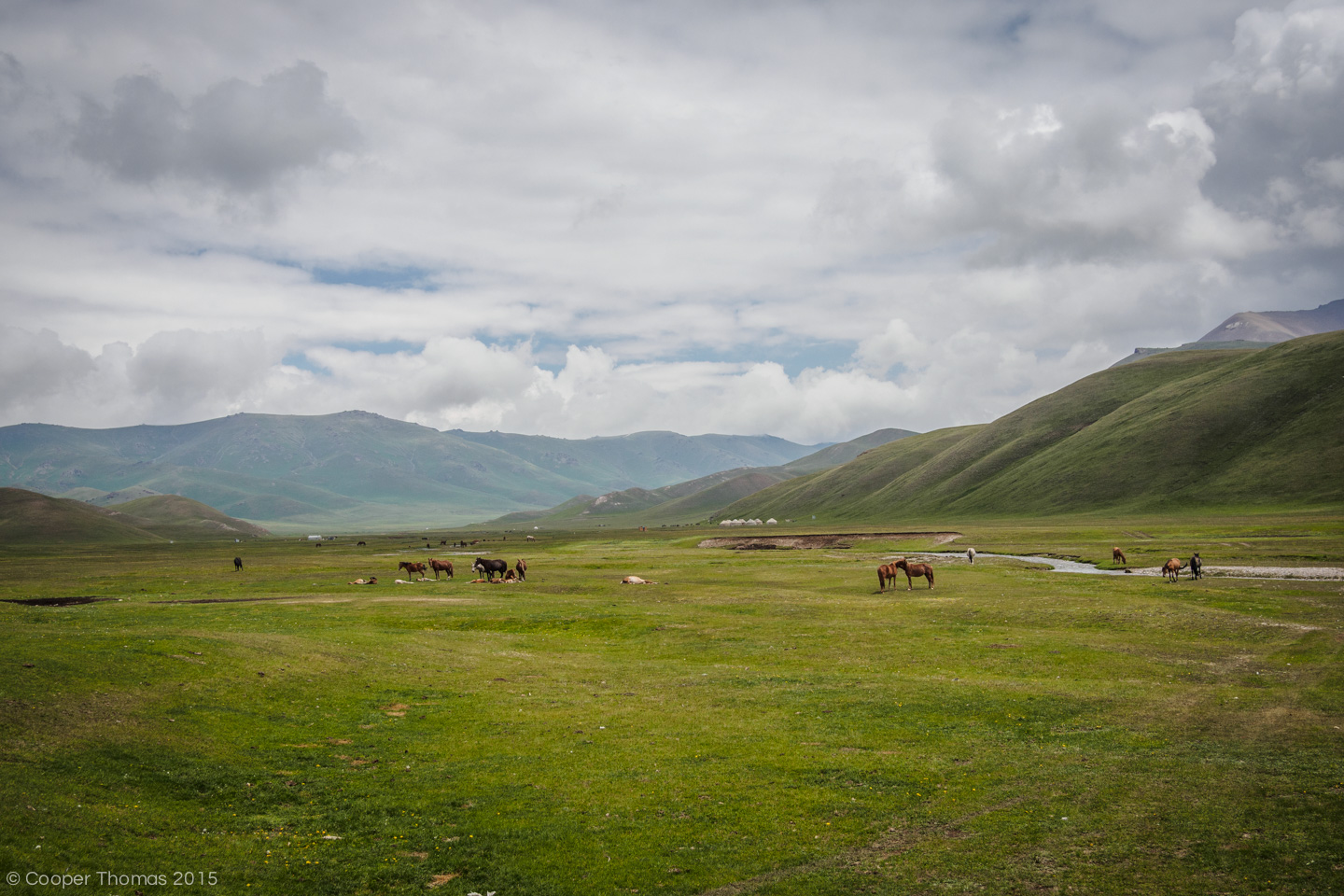
Livestock on the jailoo
The drive to/from Song Köl deserves an honorable mention as well. But then again, pretty much every drive in Kyrgyzstan merits some recognition. Have you booked your tickets yet?!
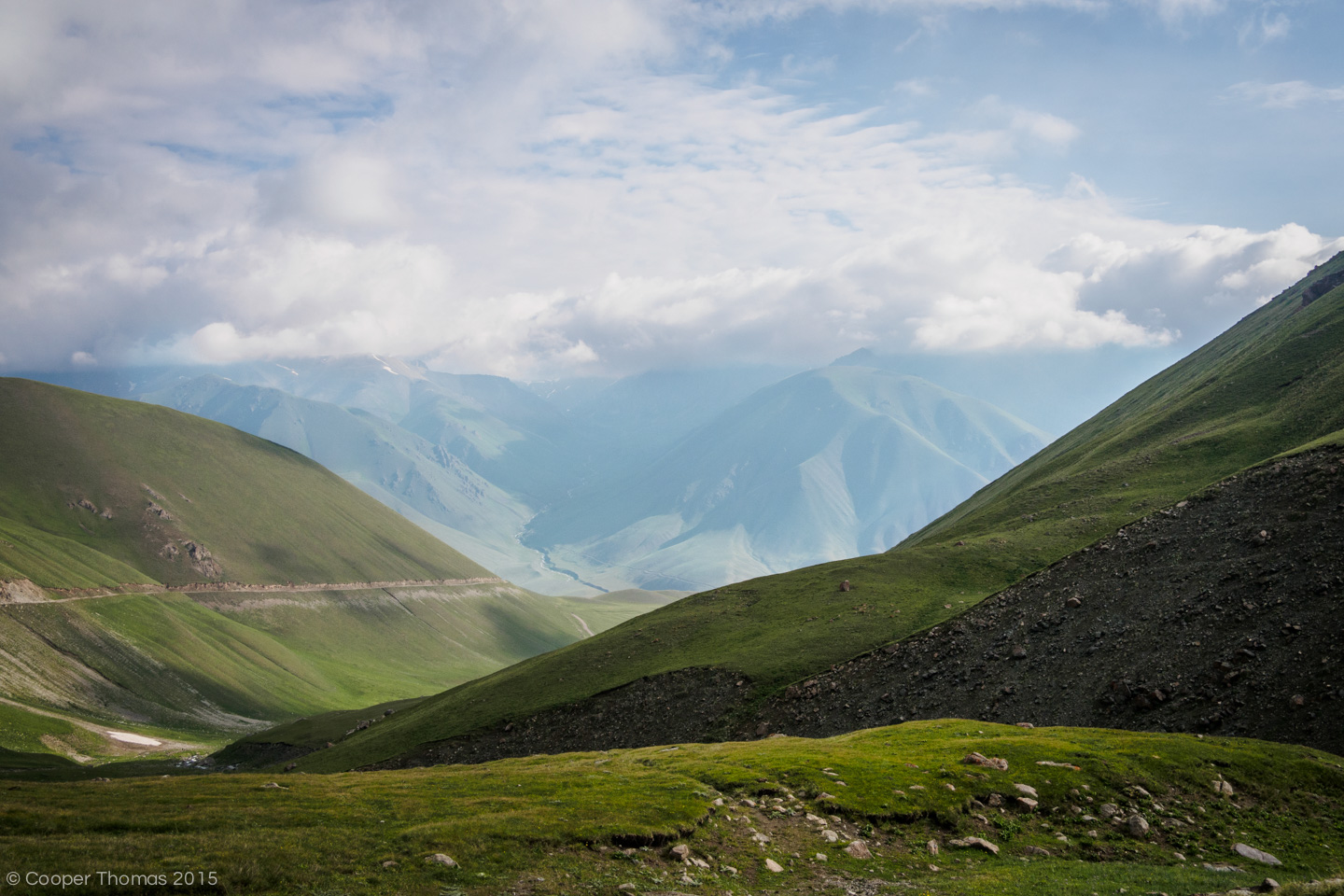
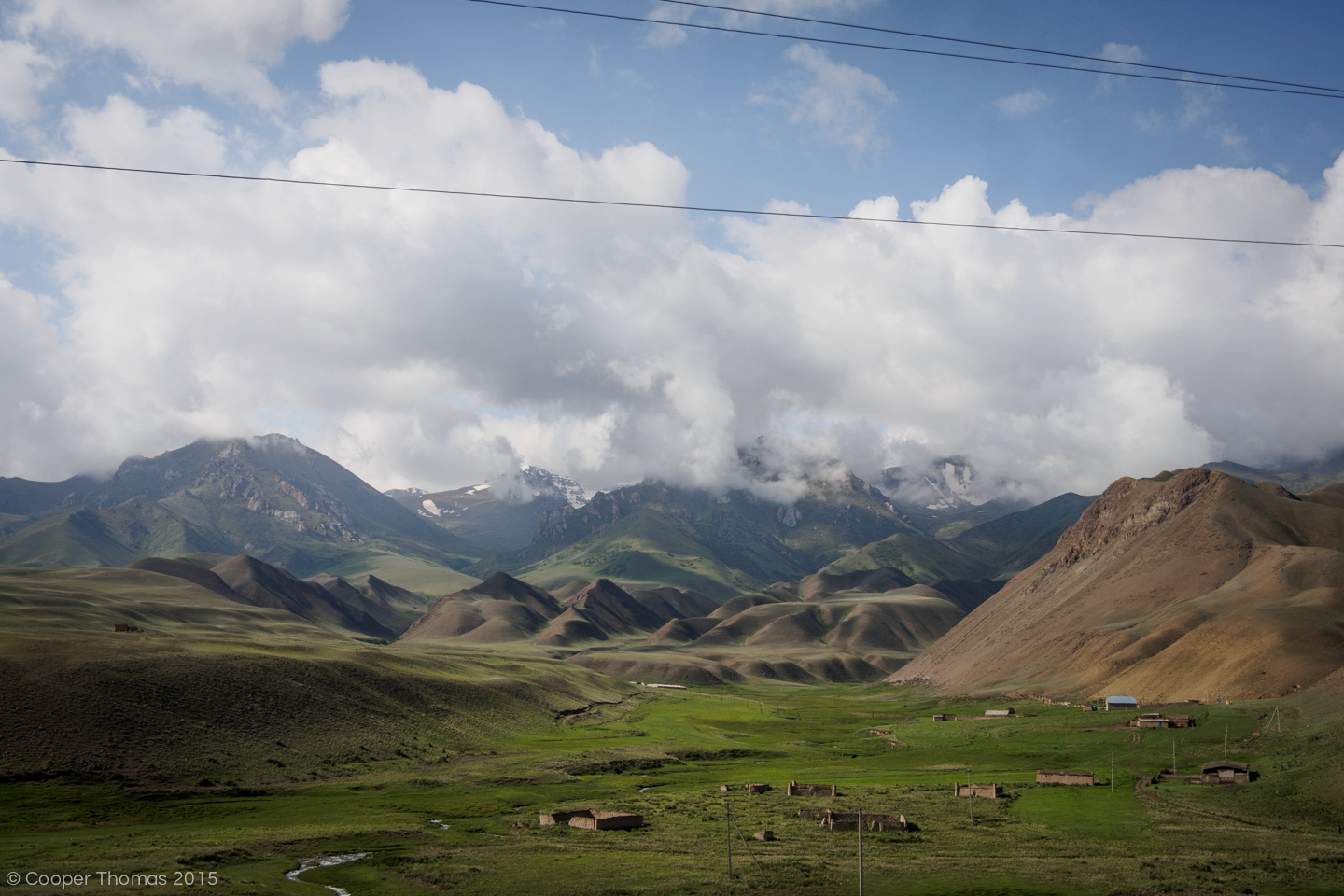

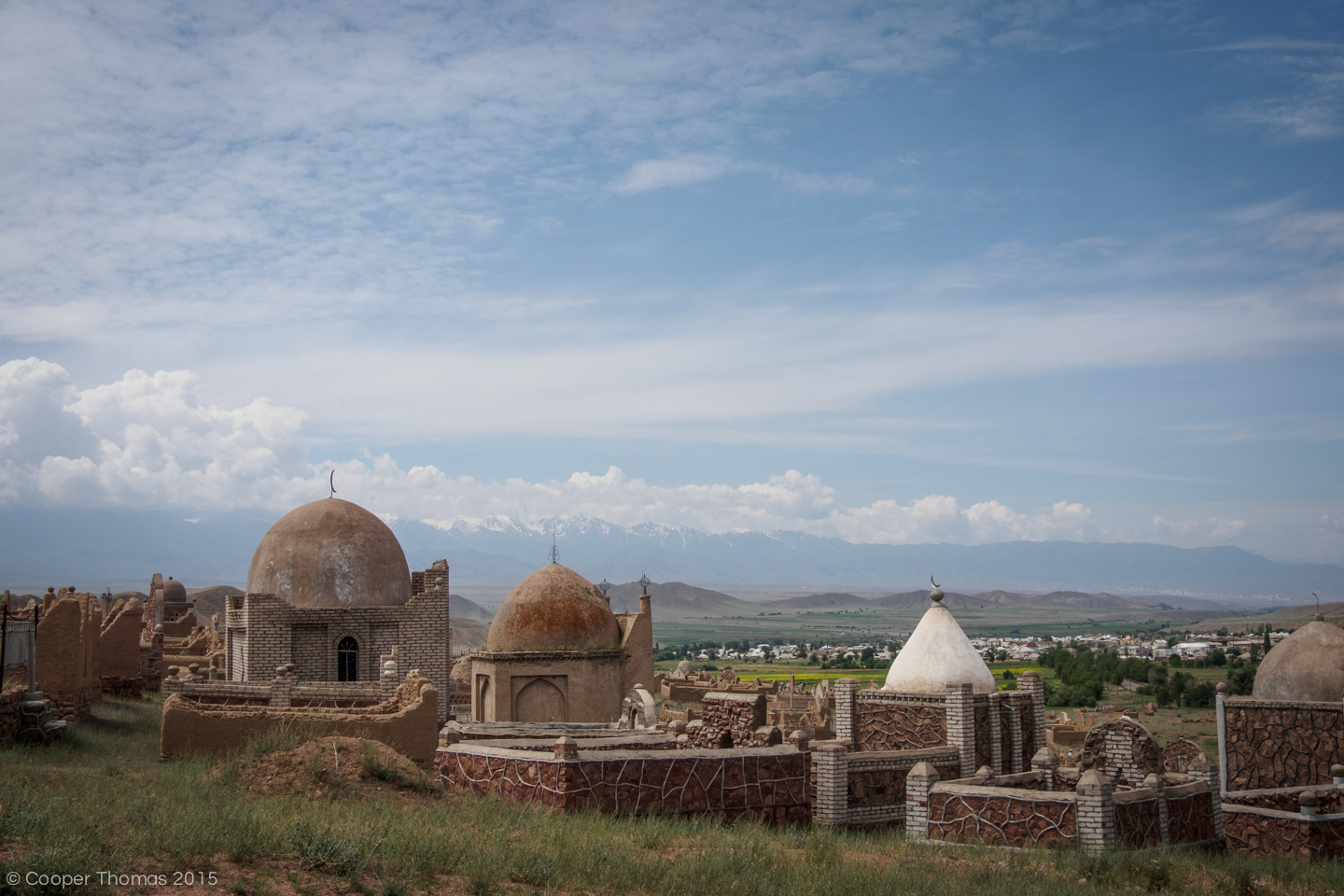

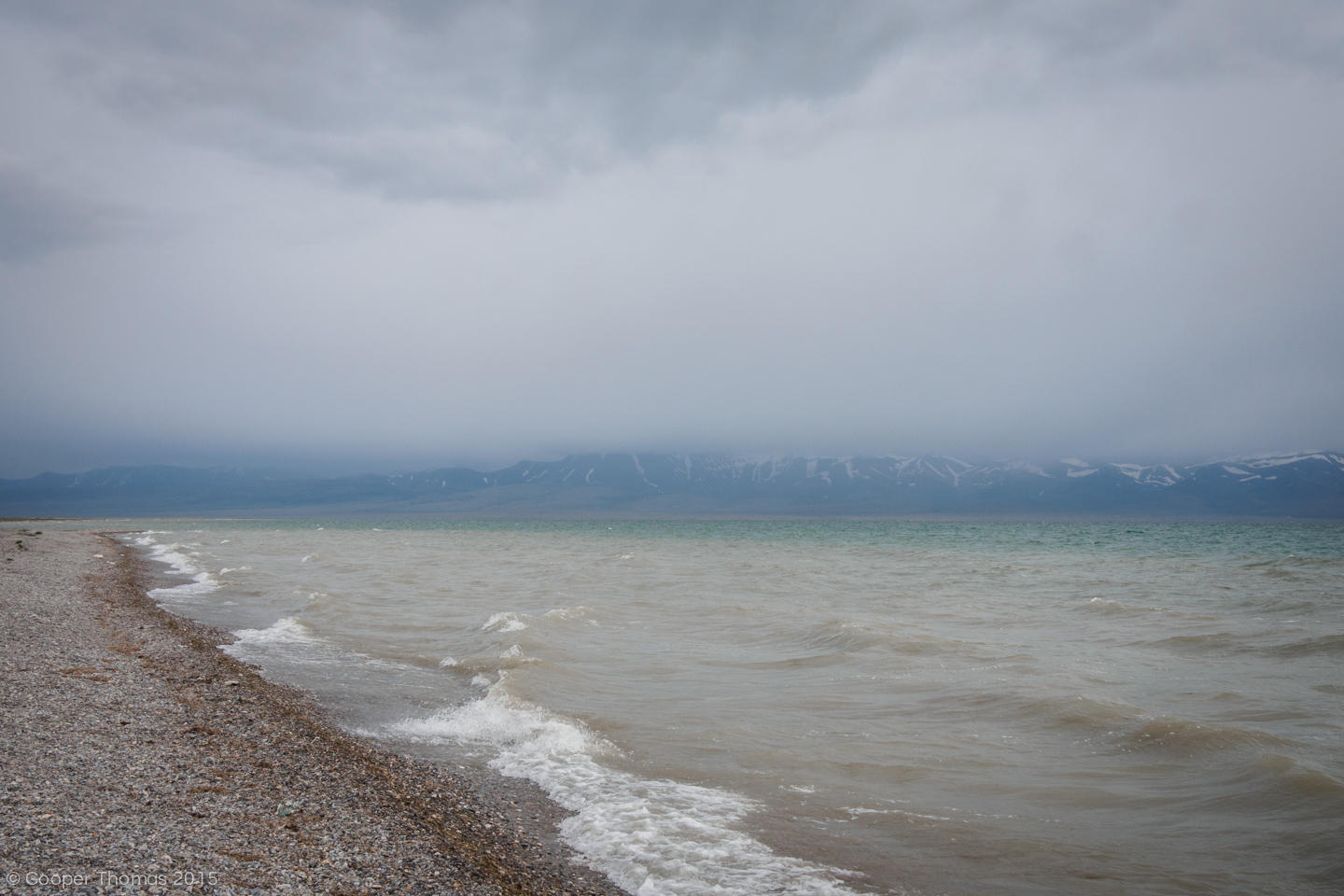
Share Your Thoughts